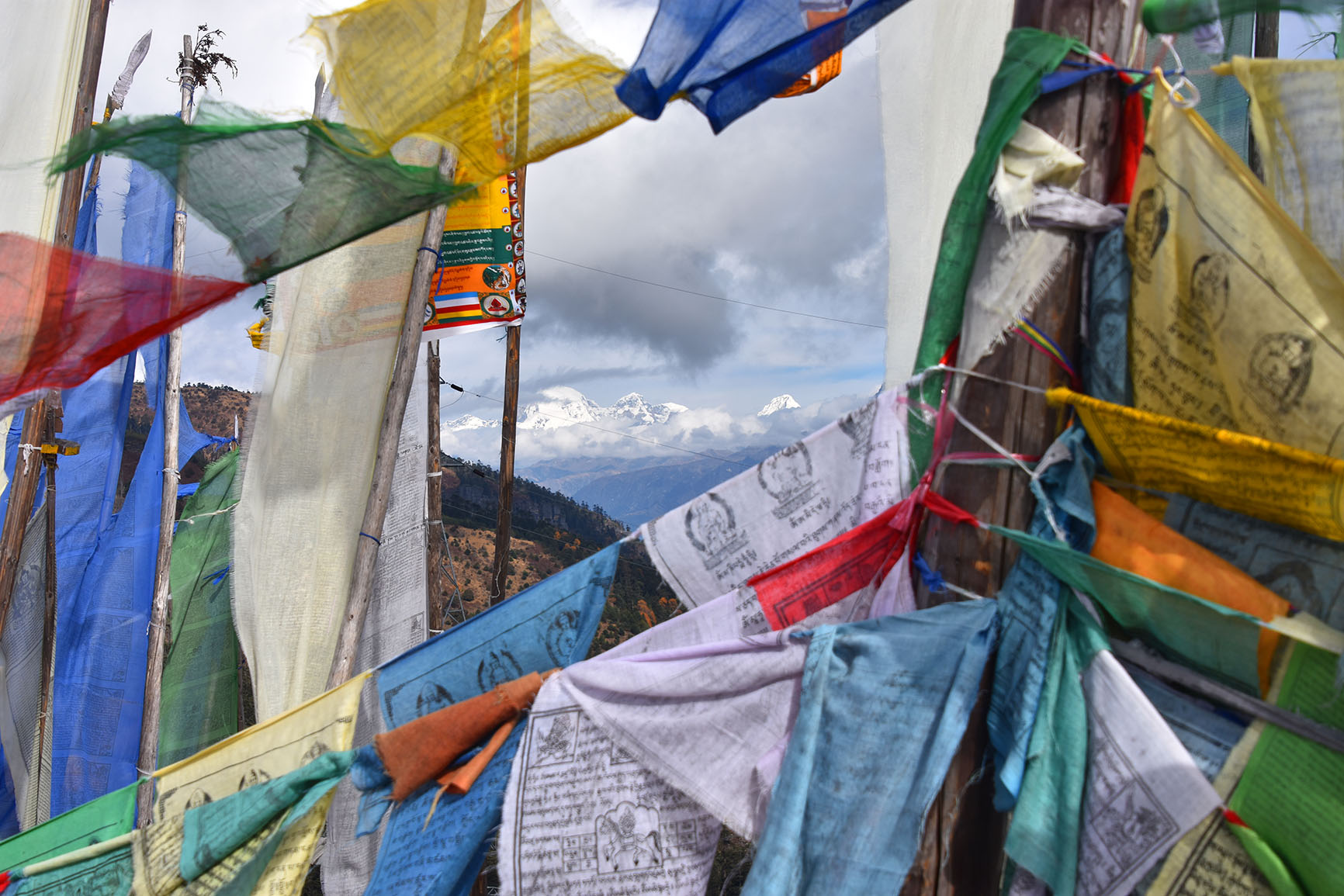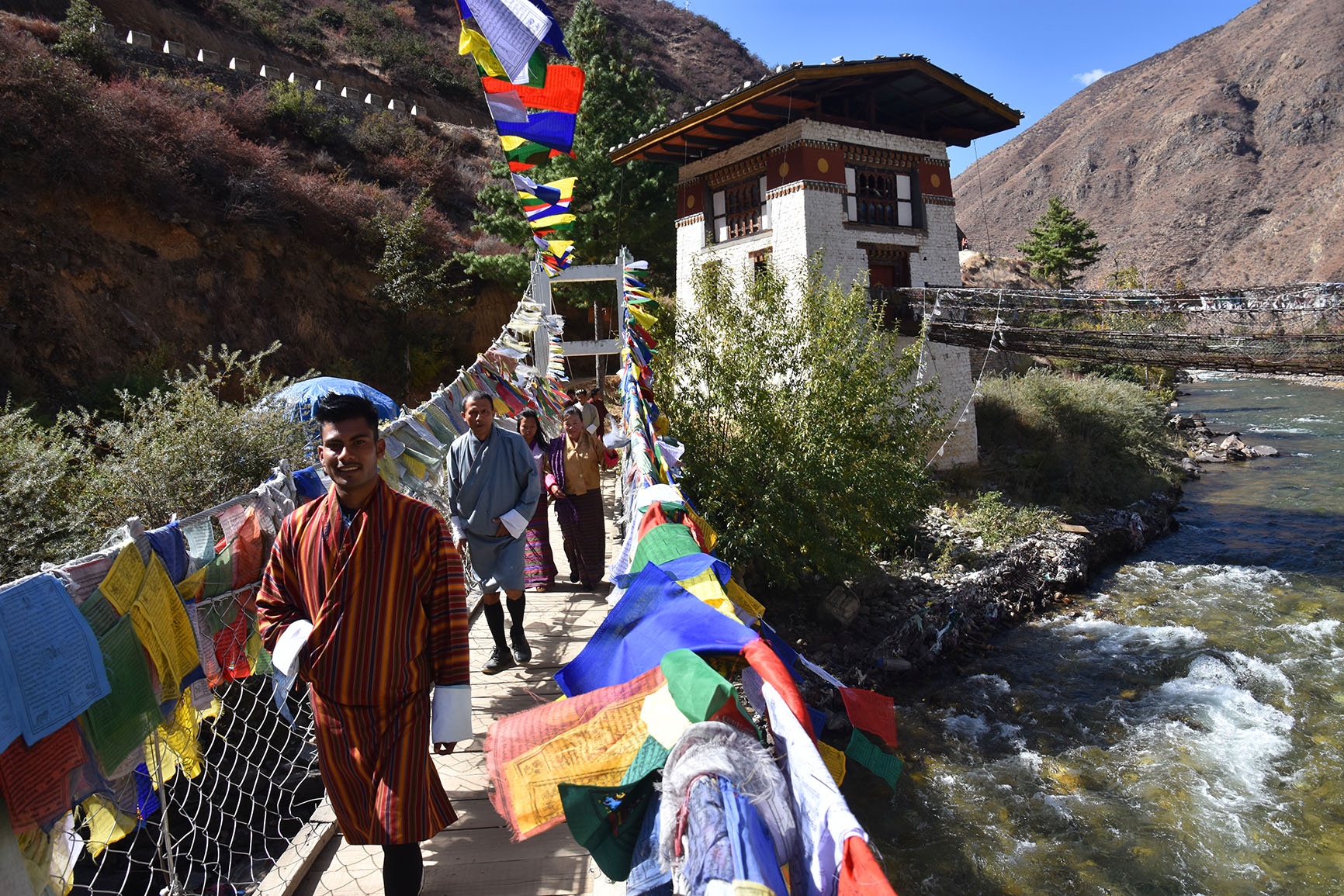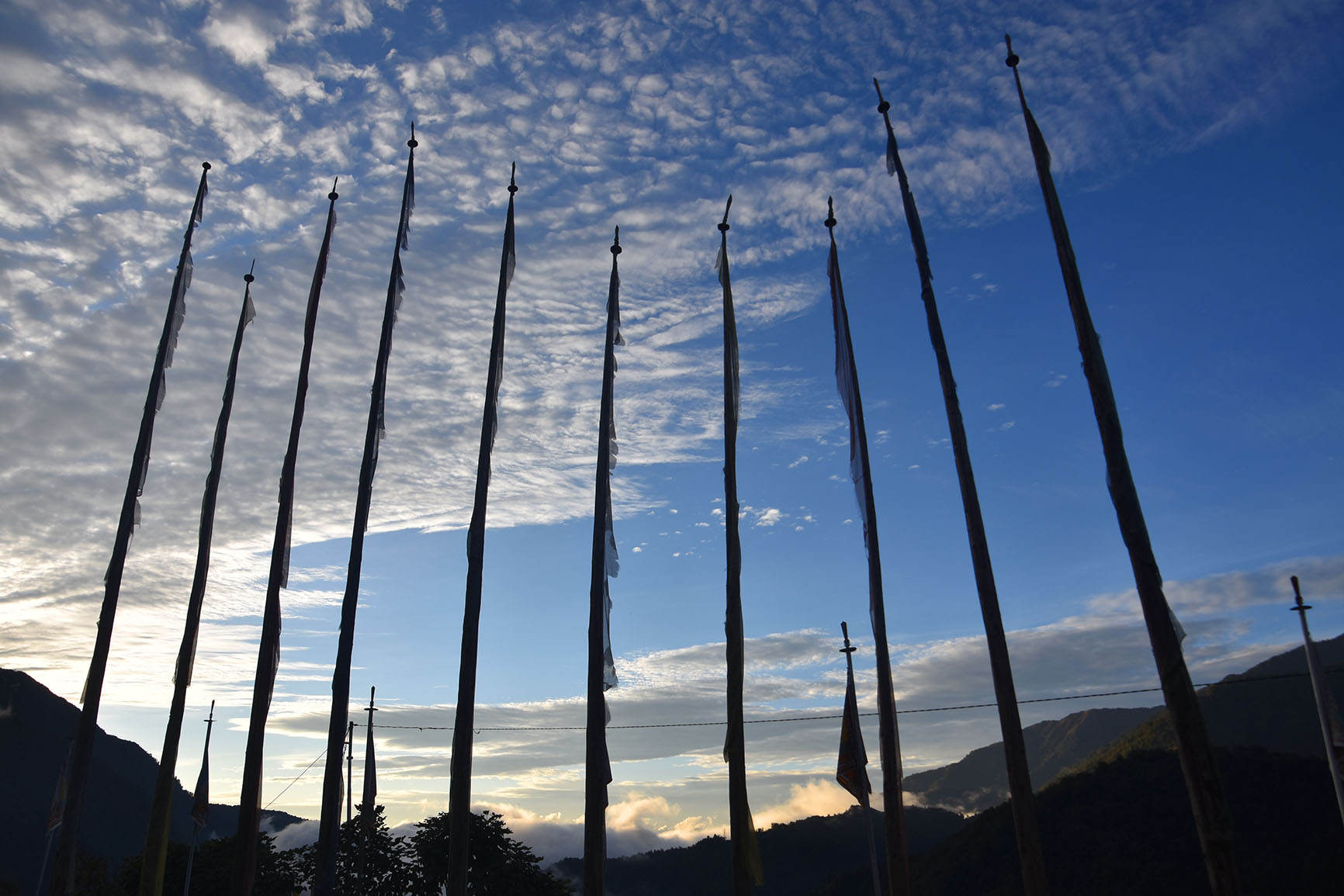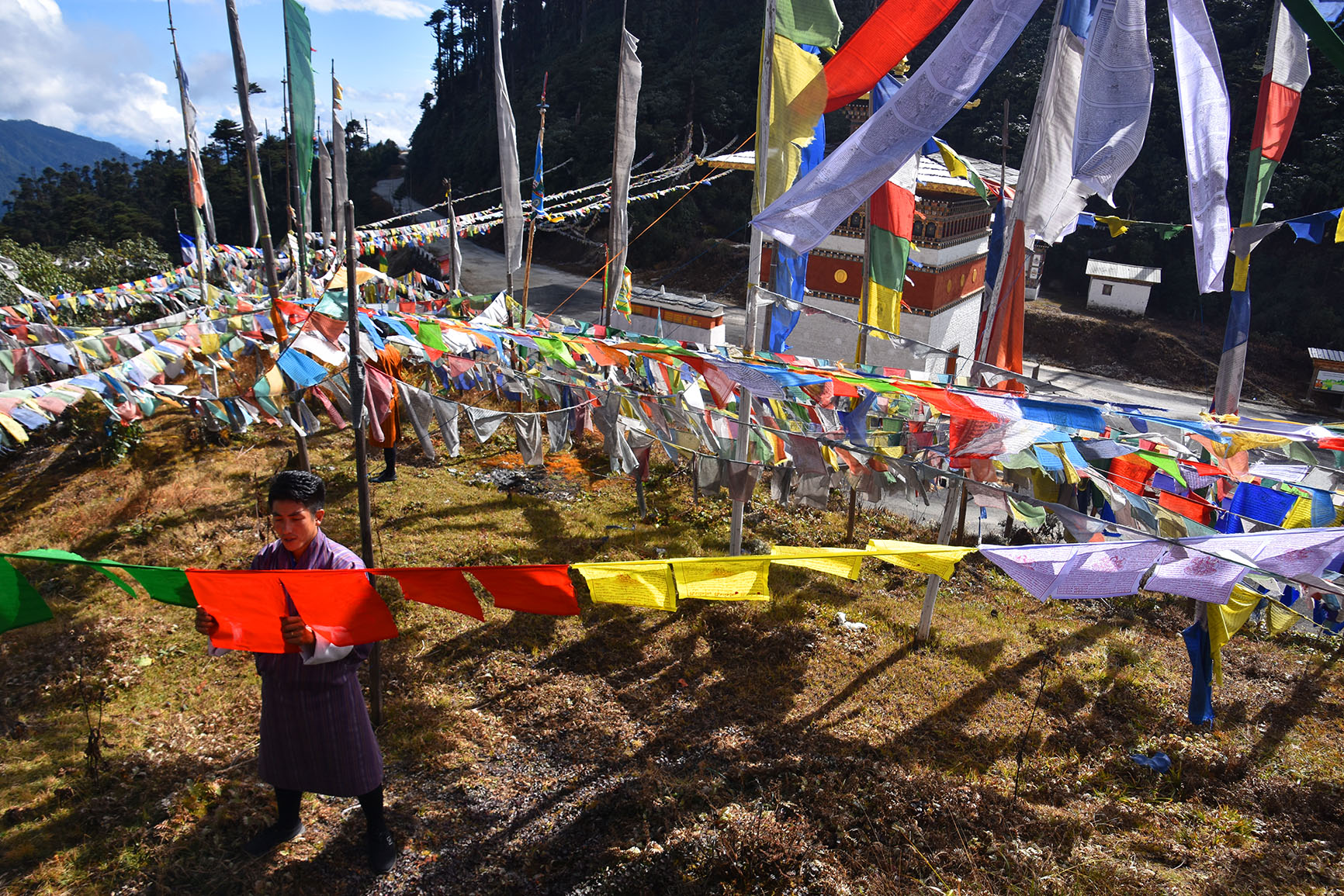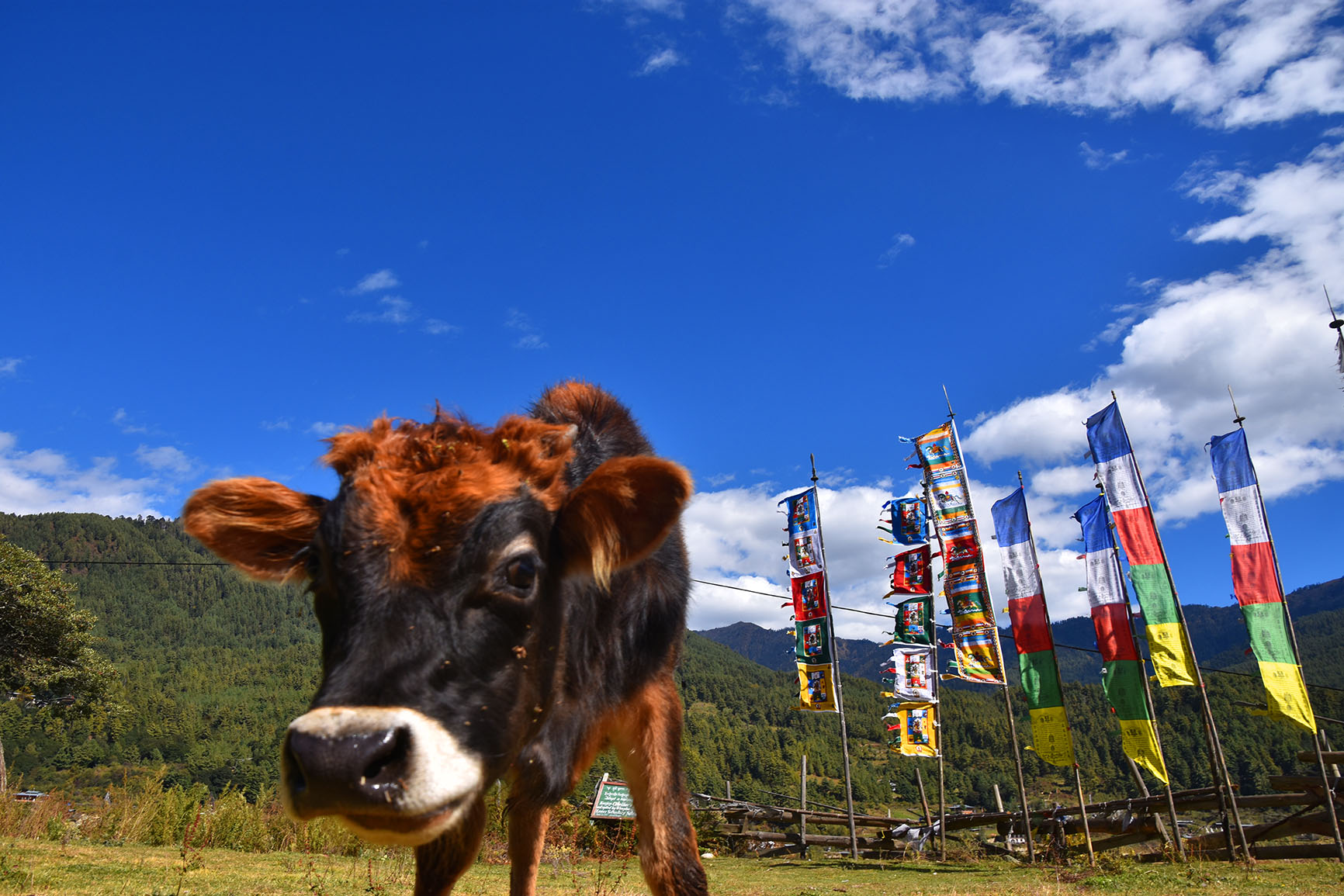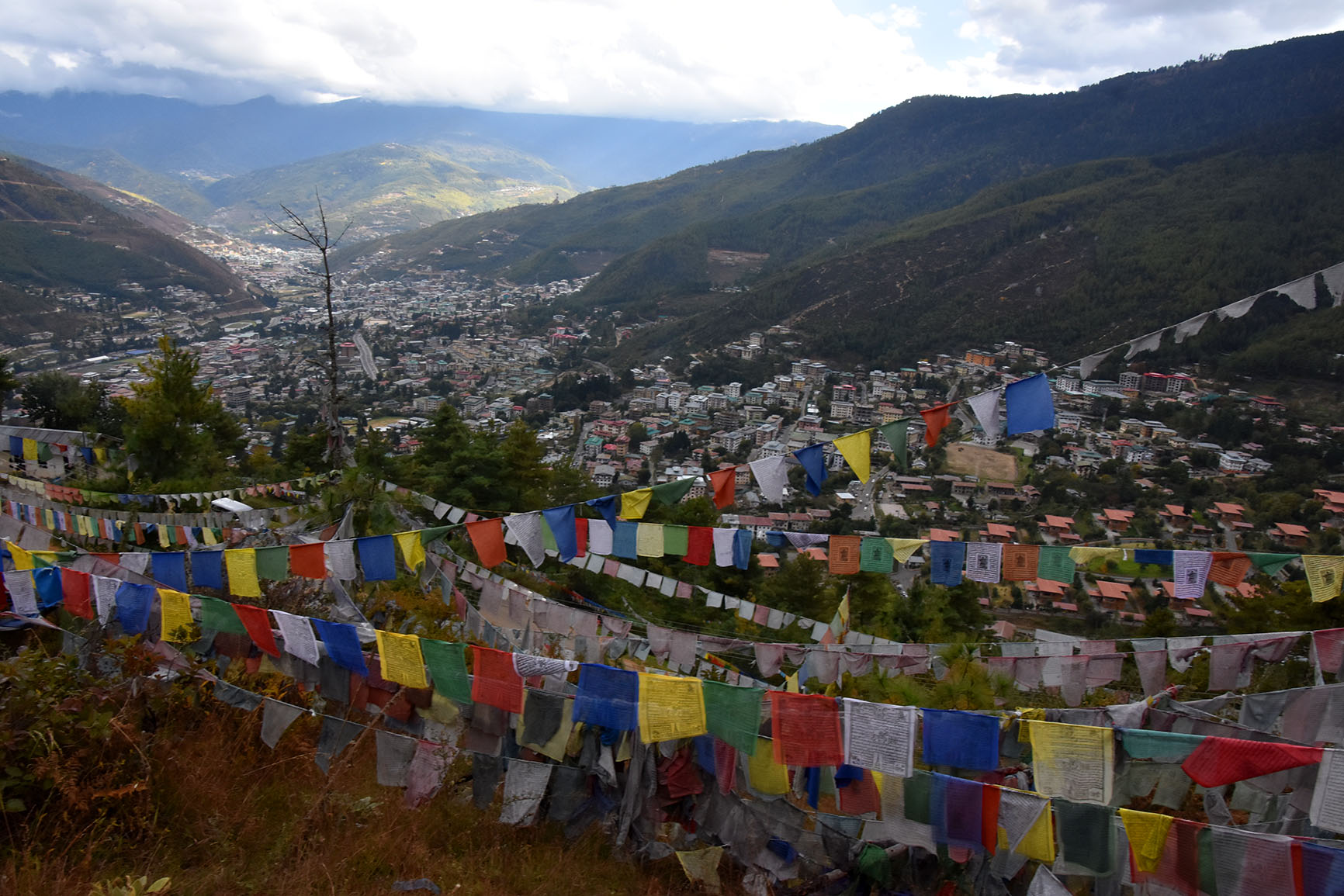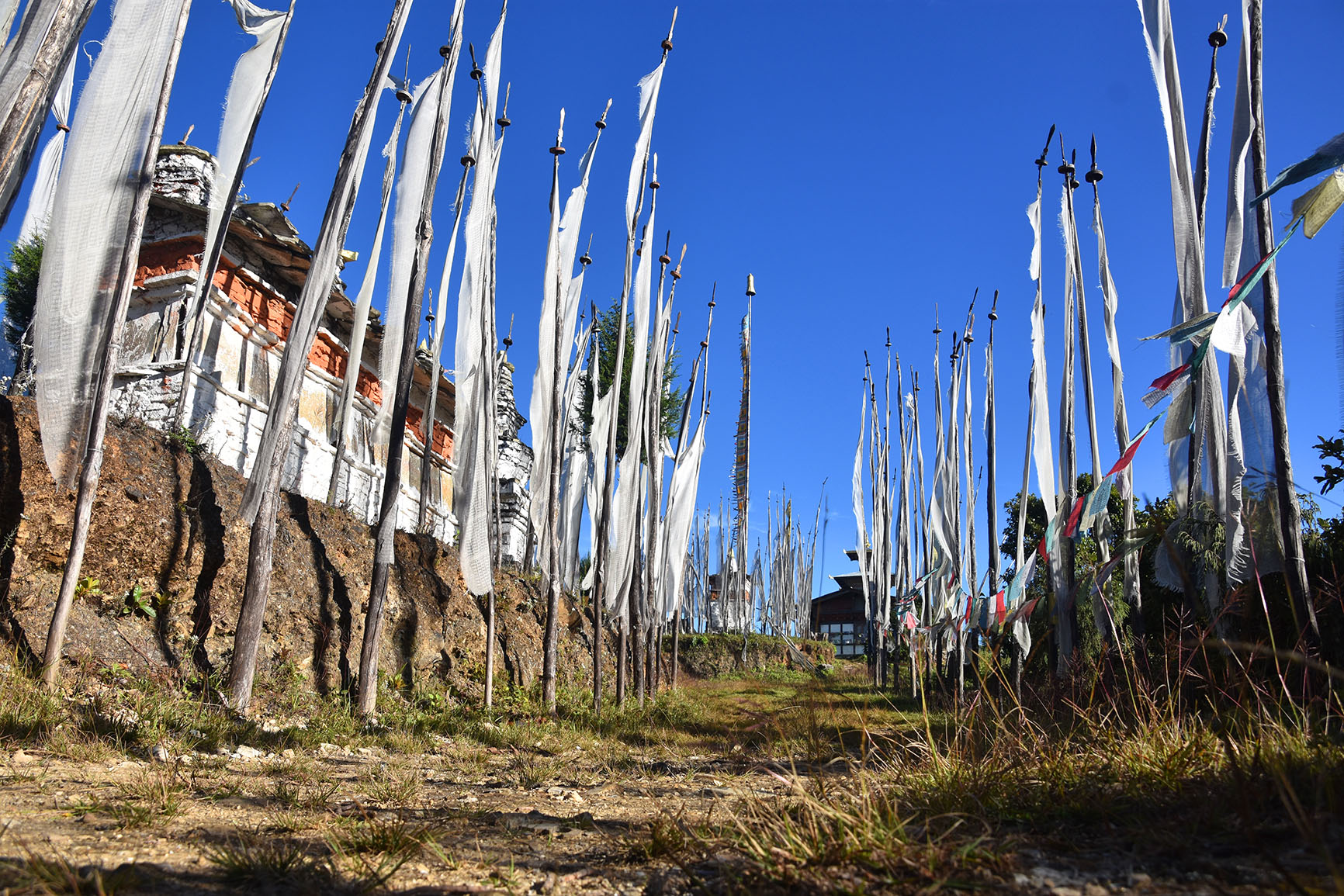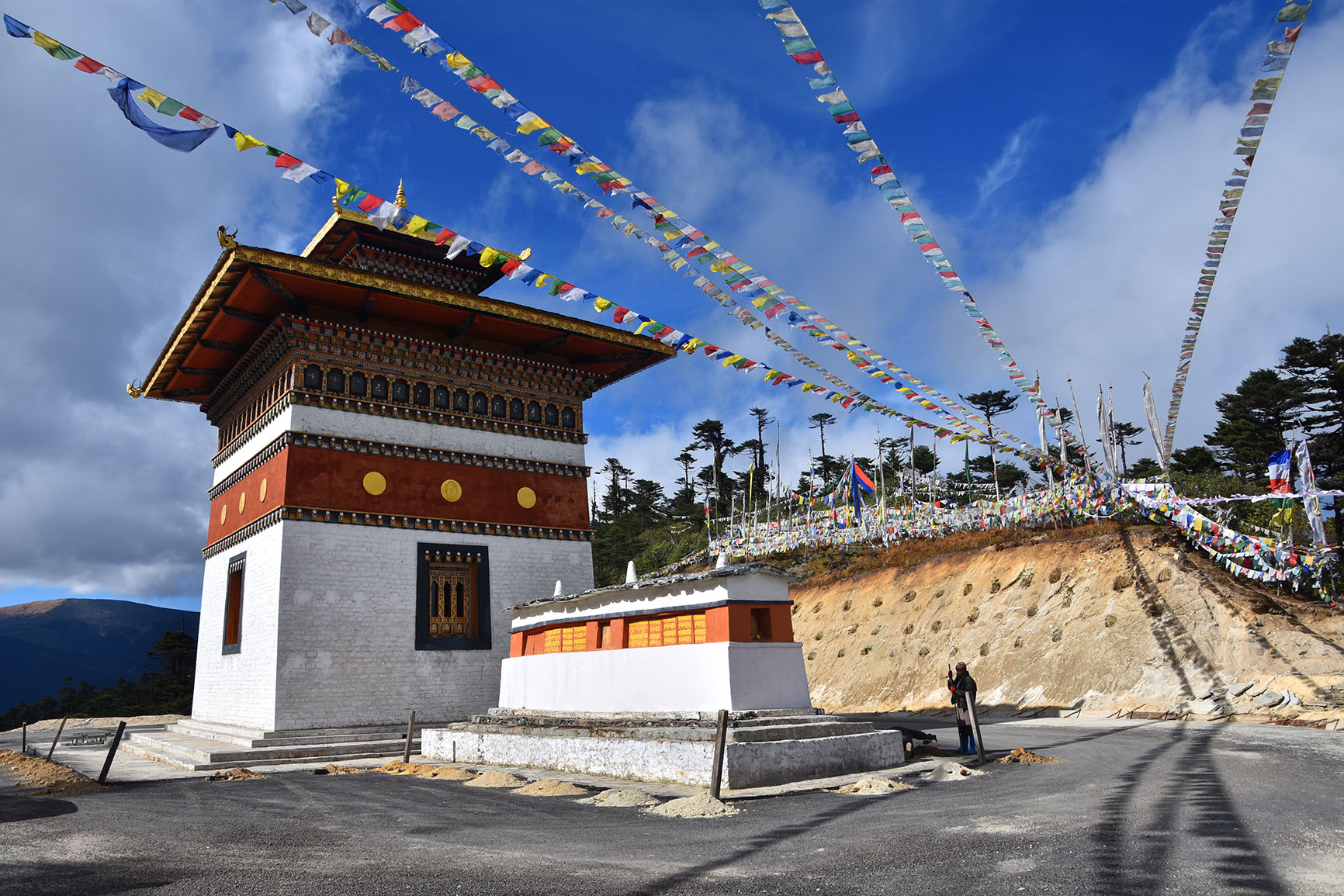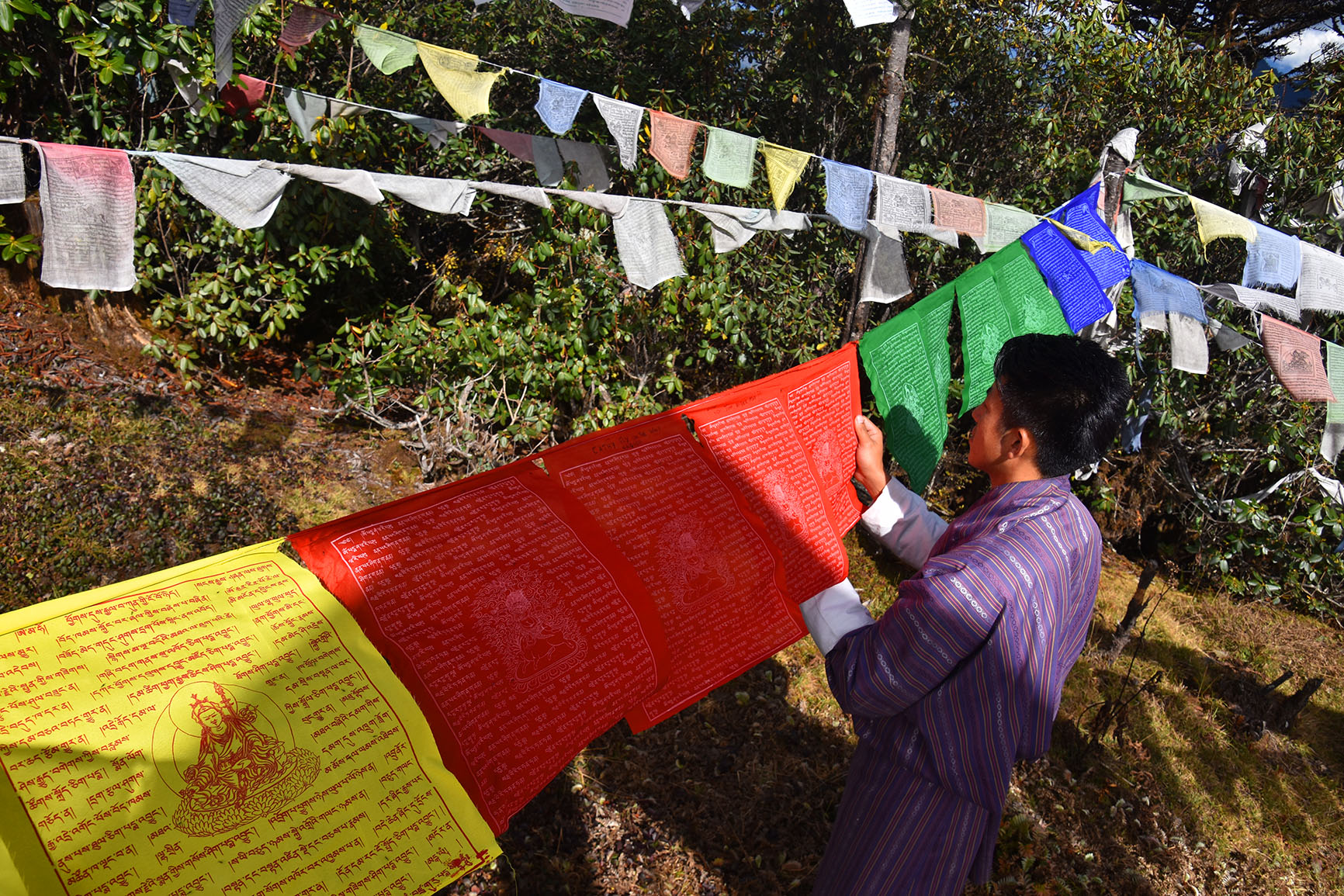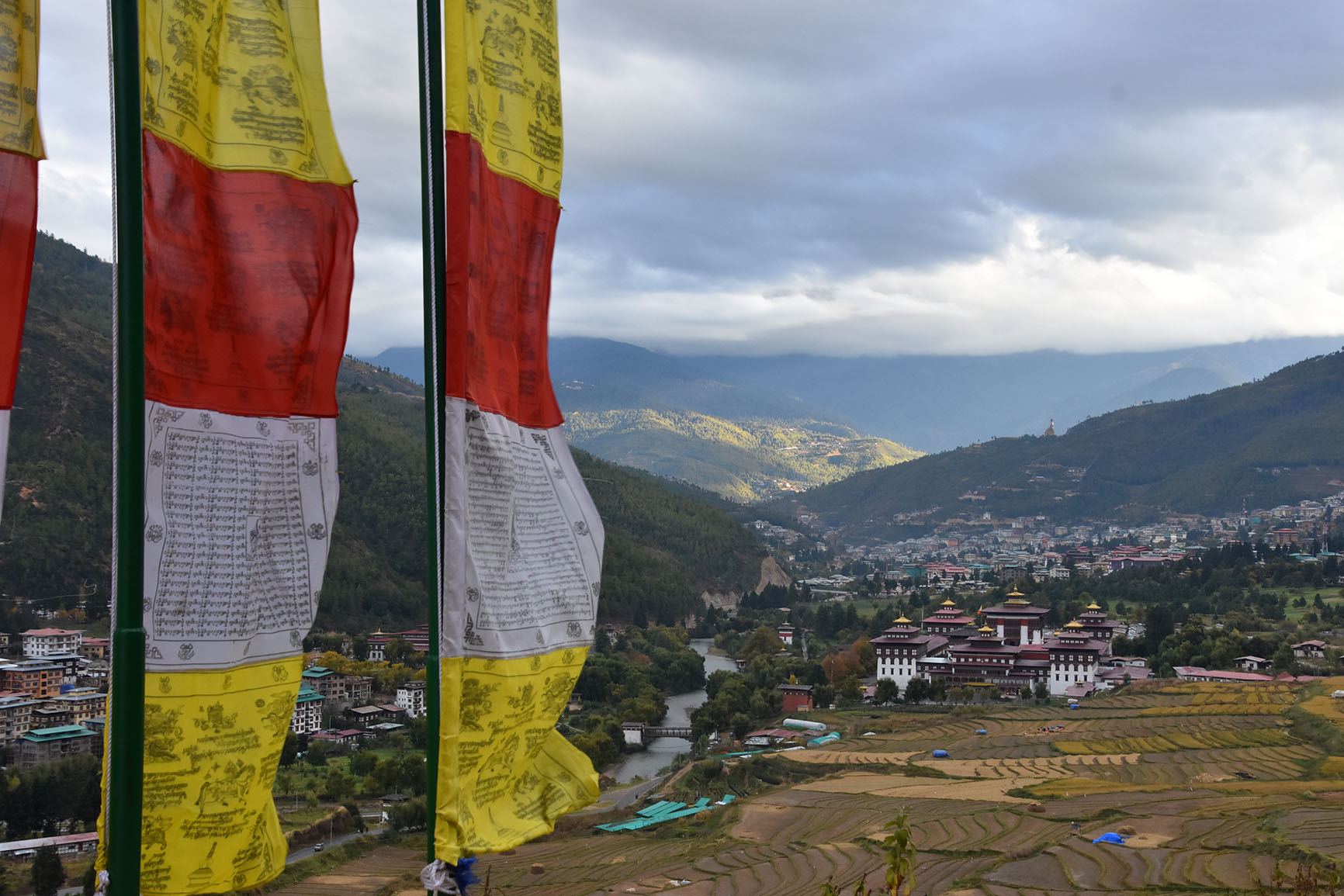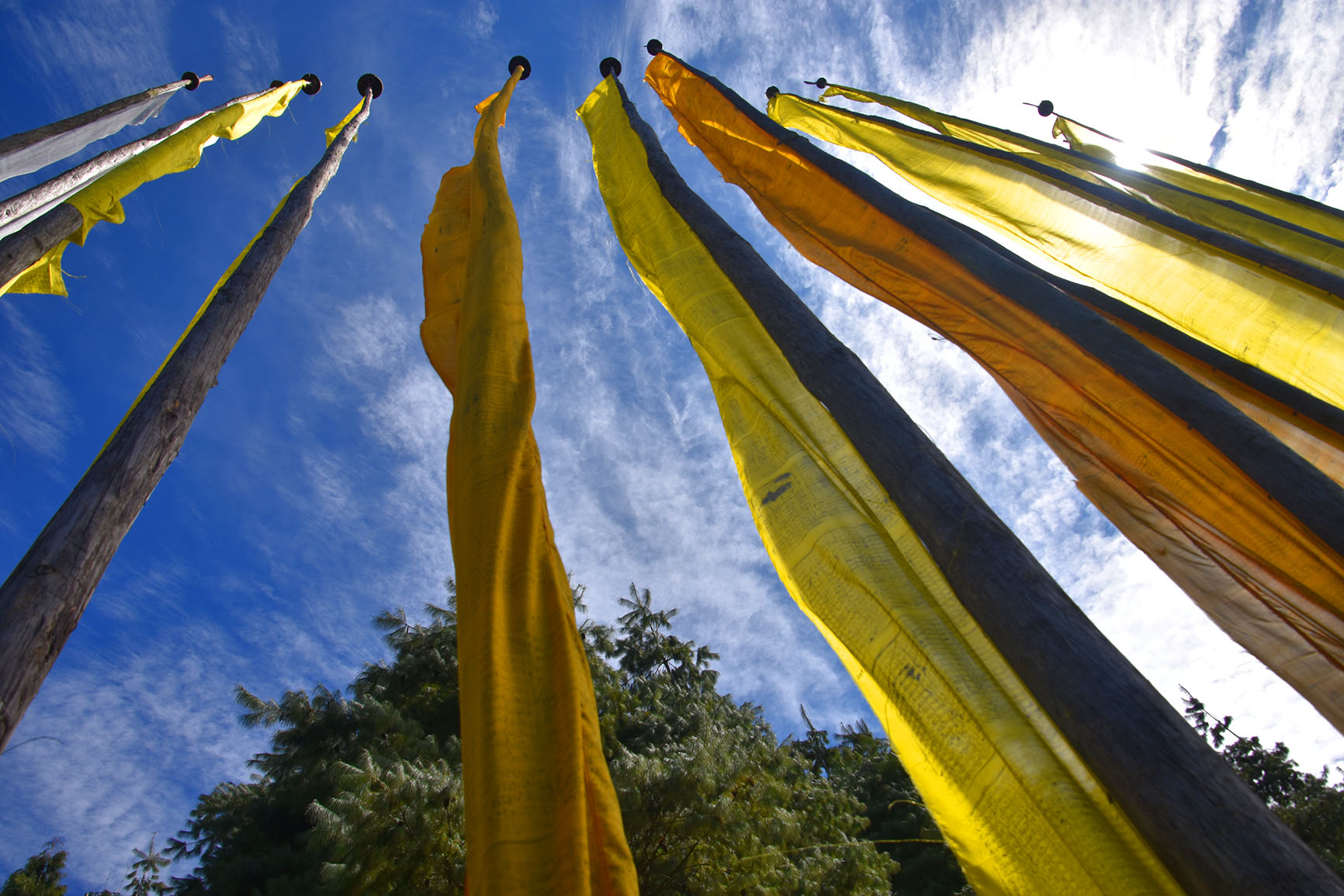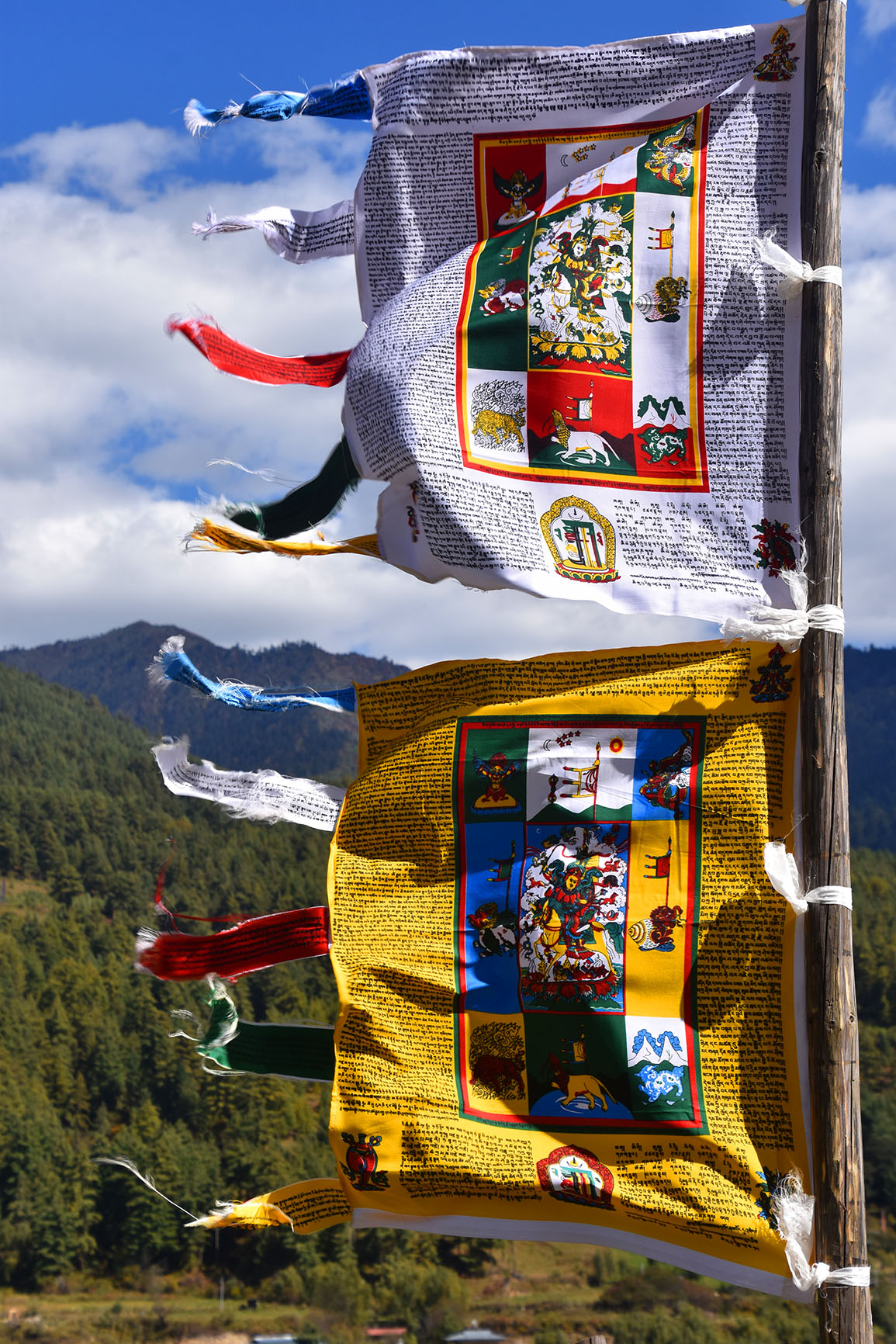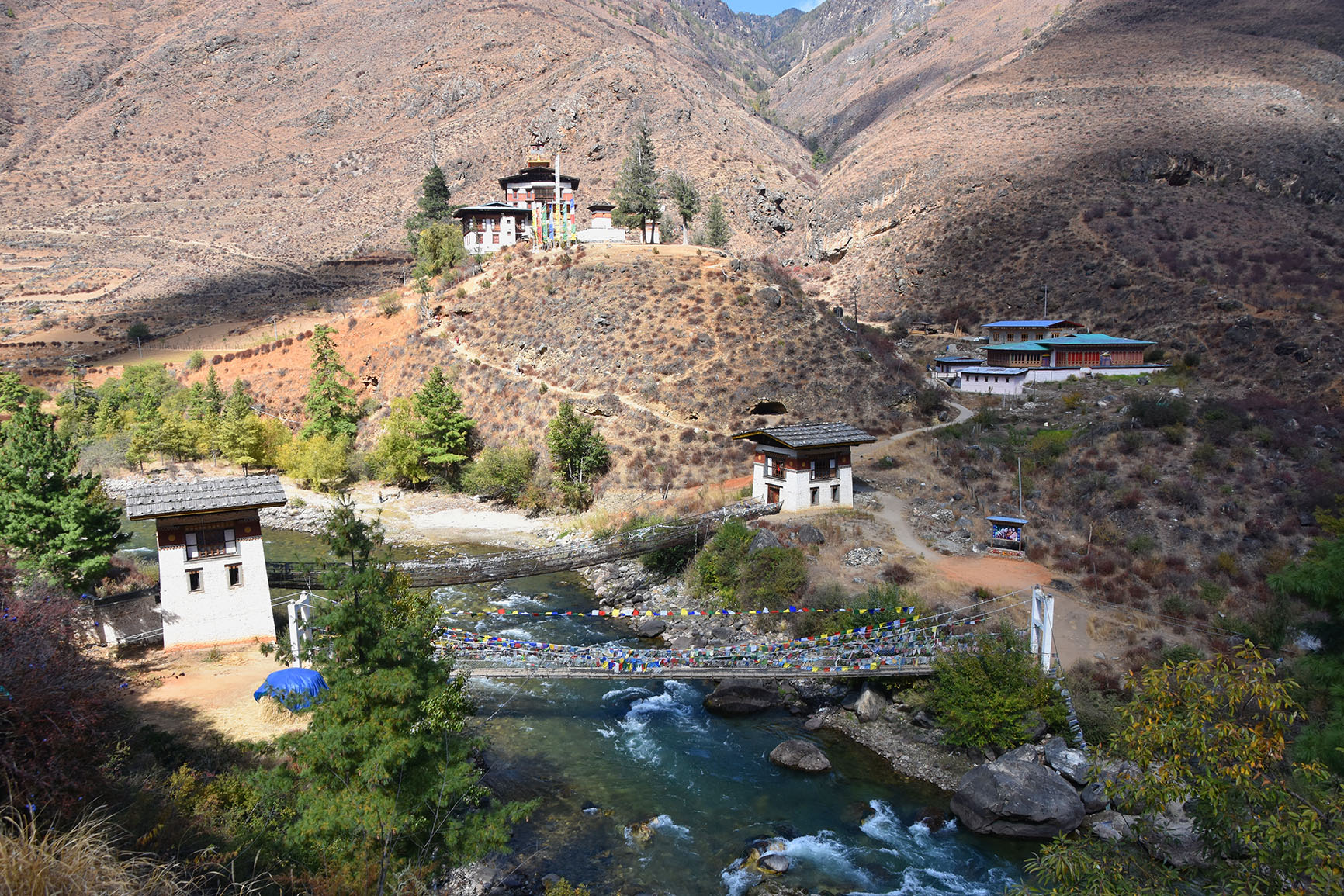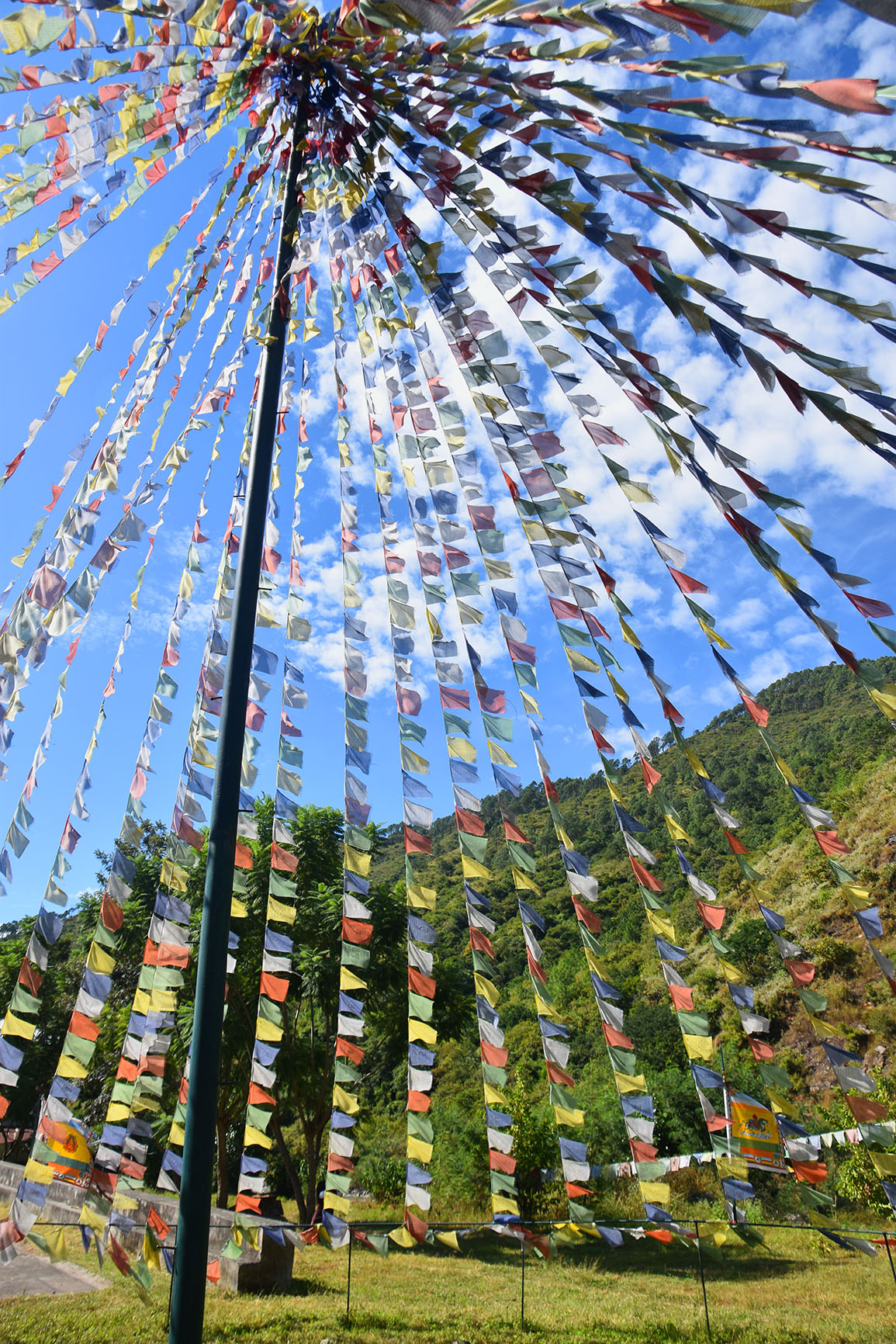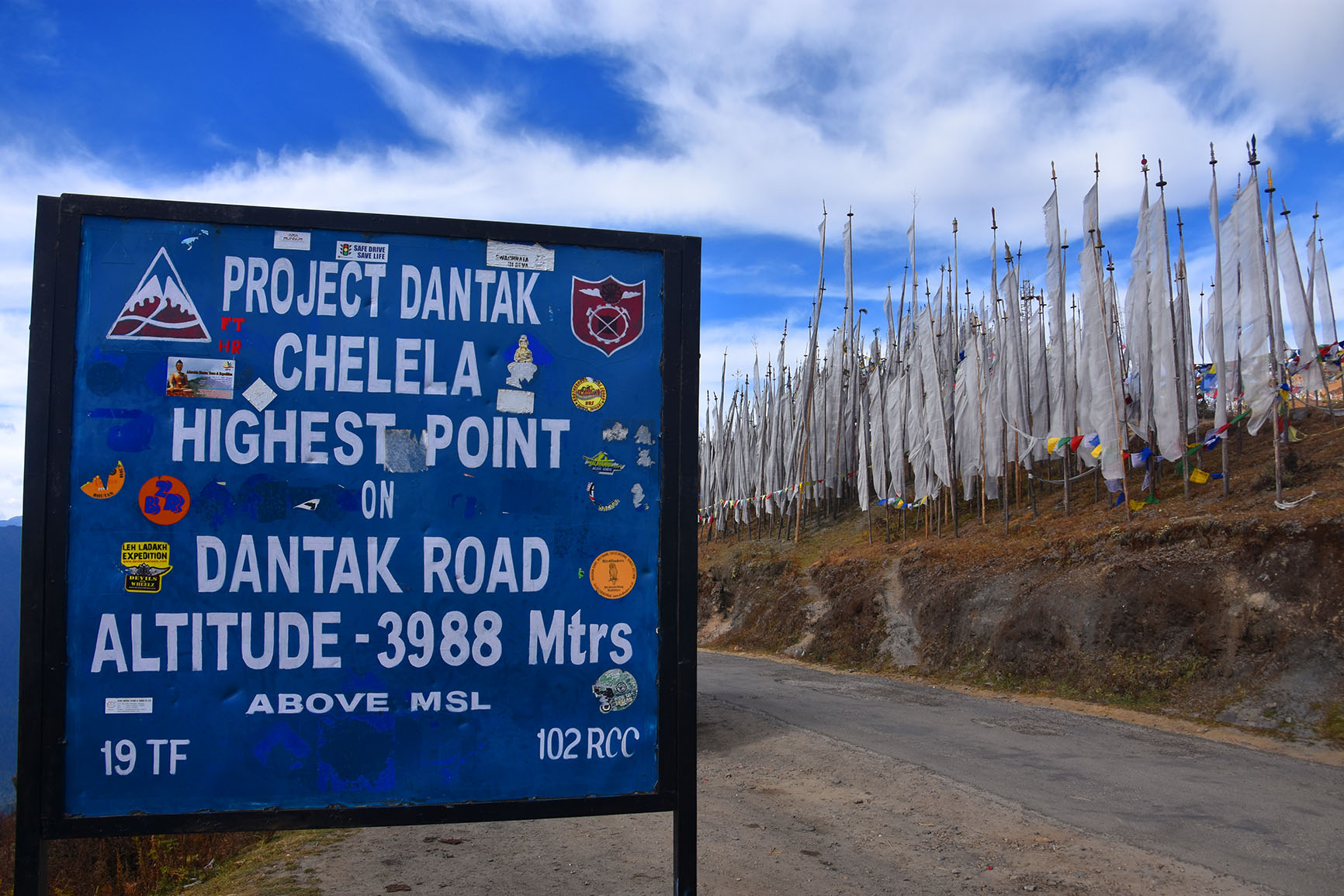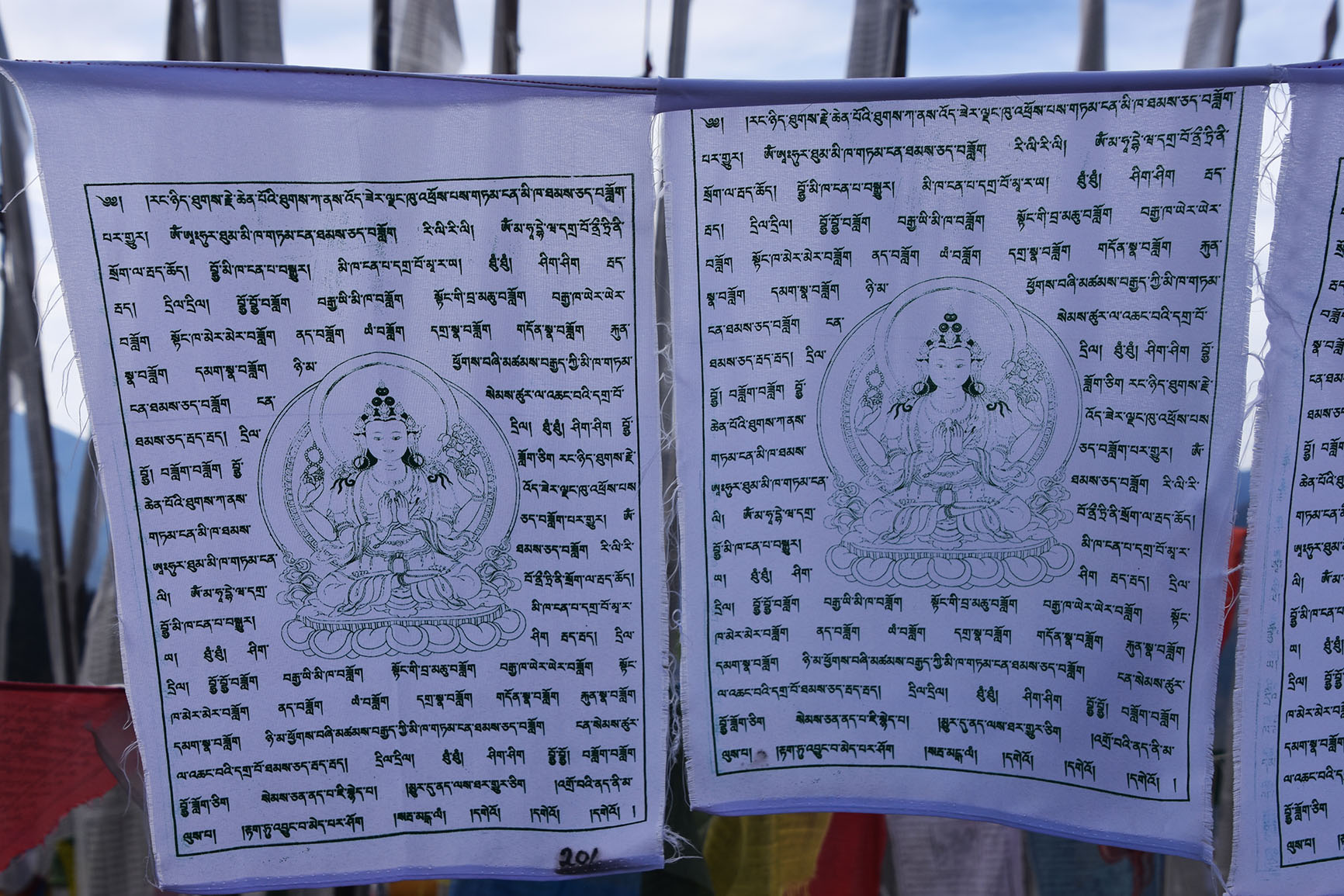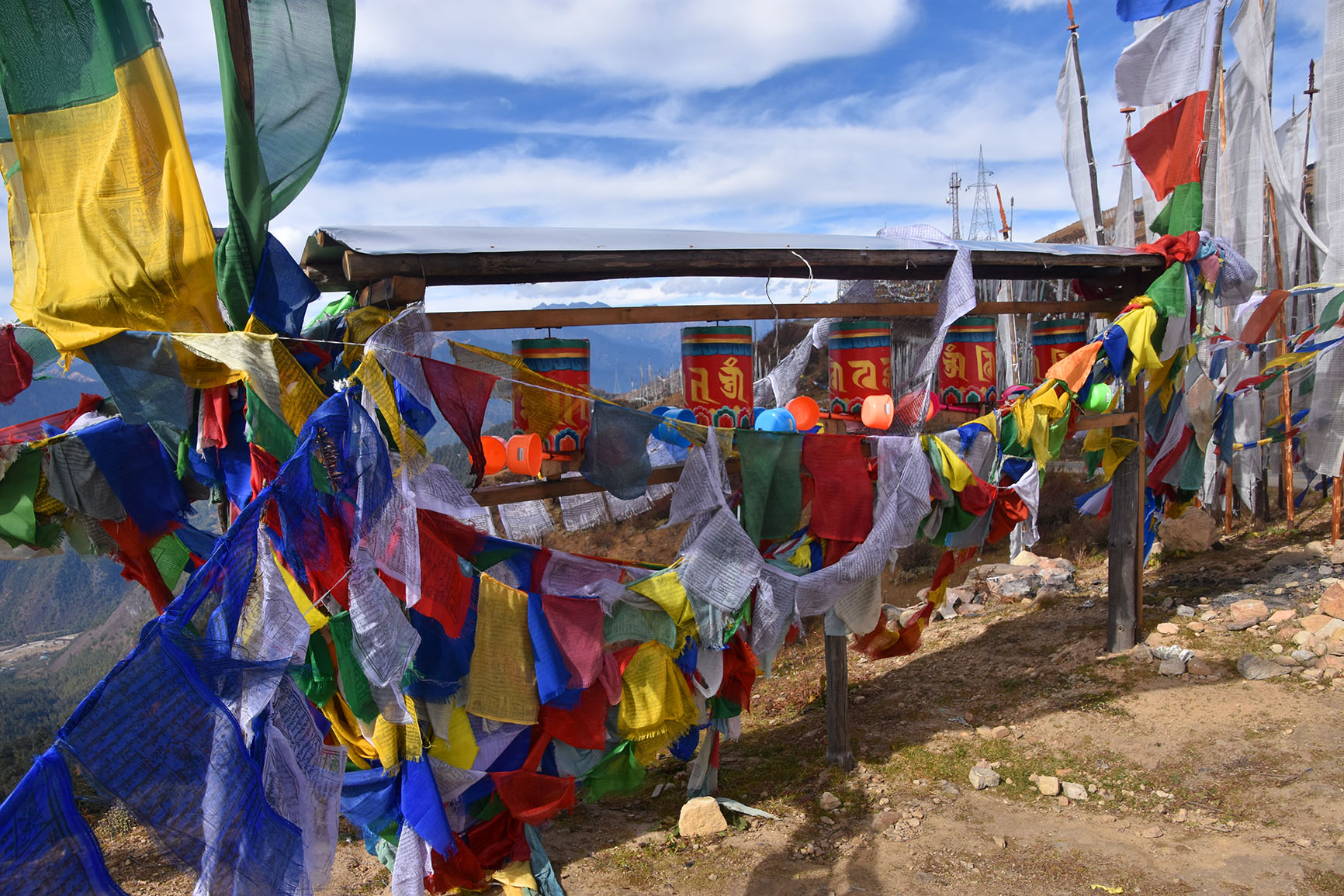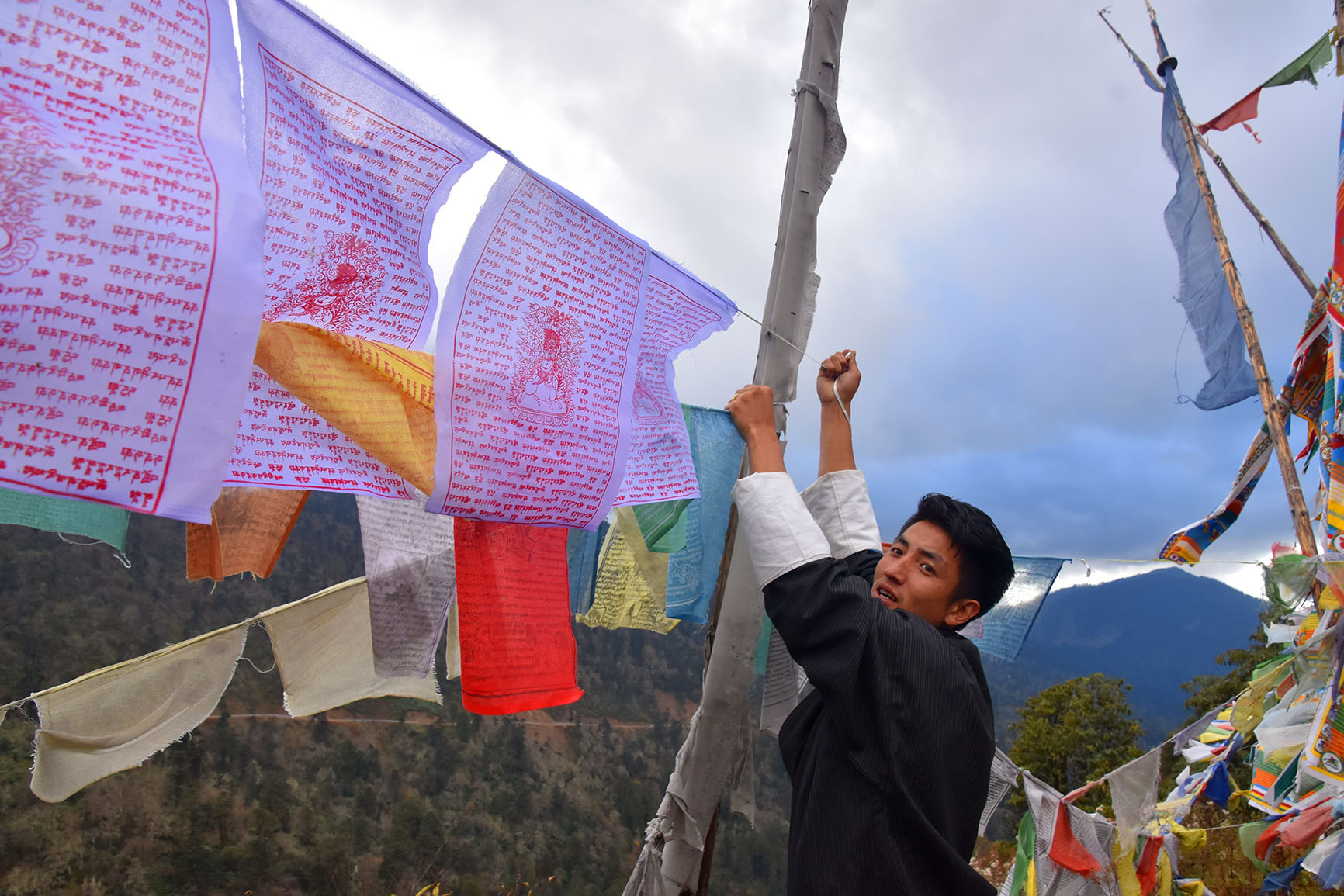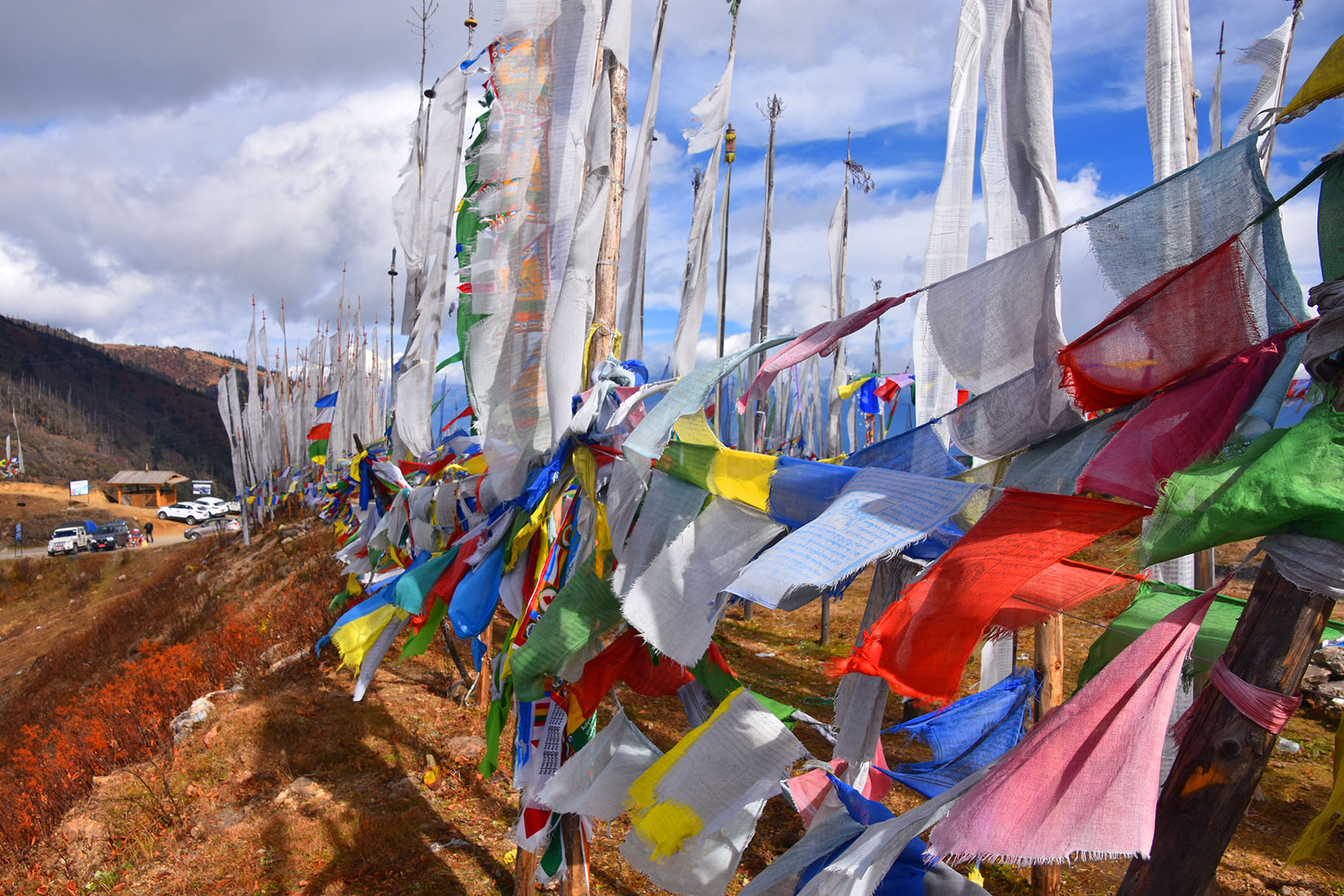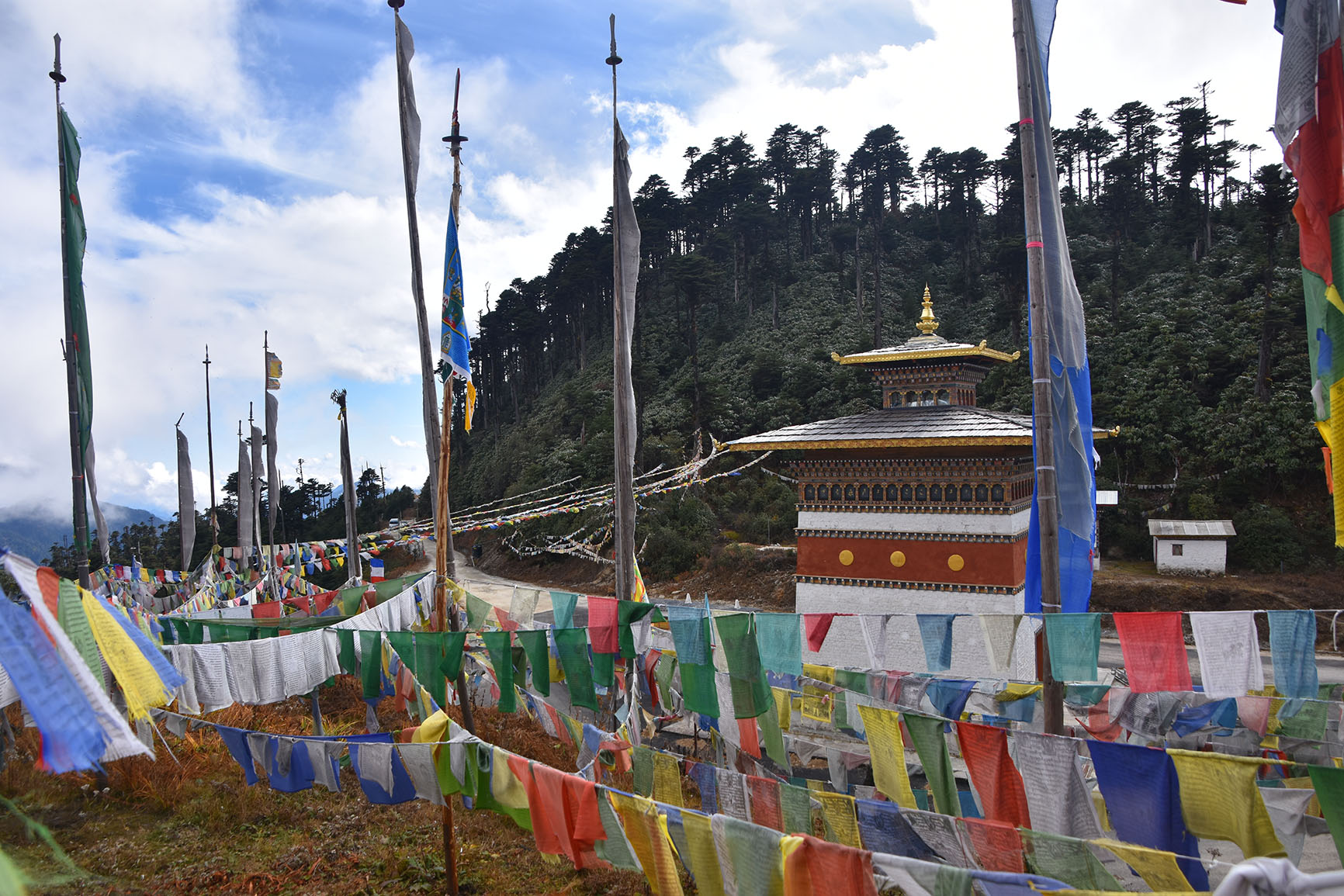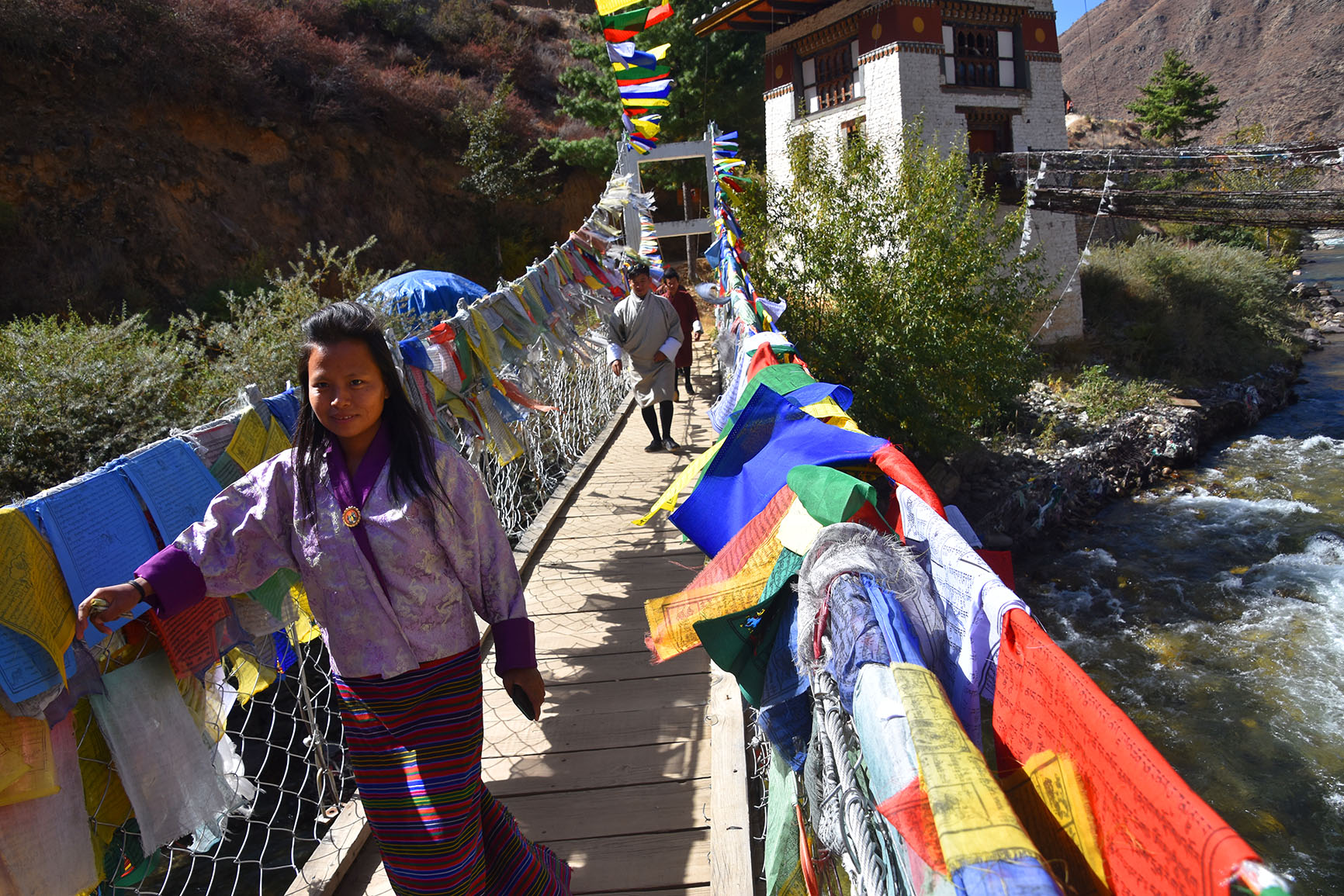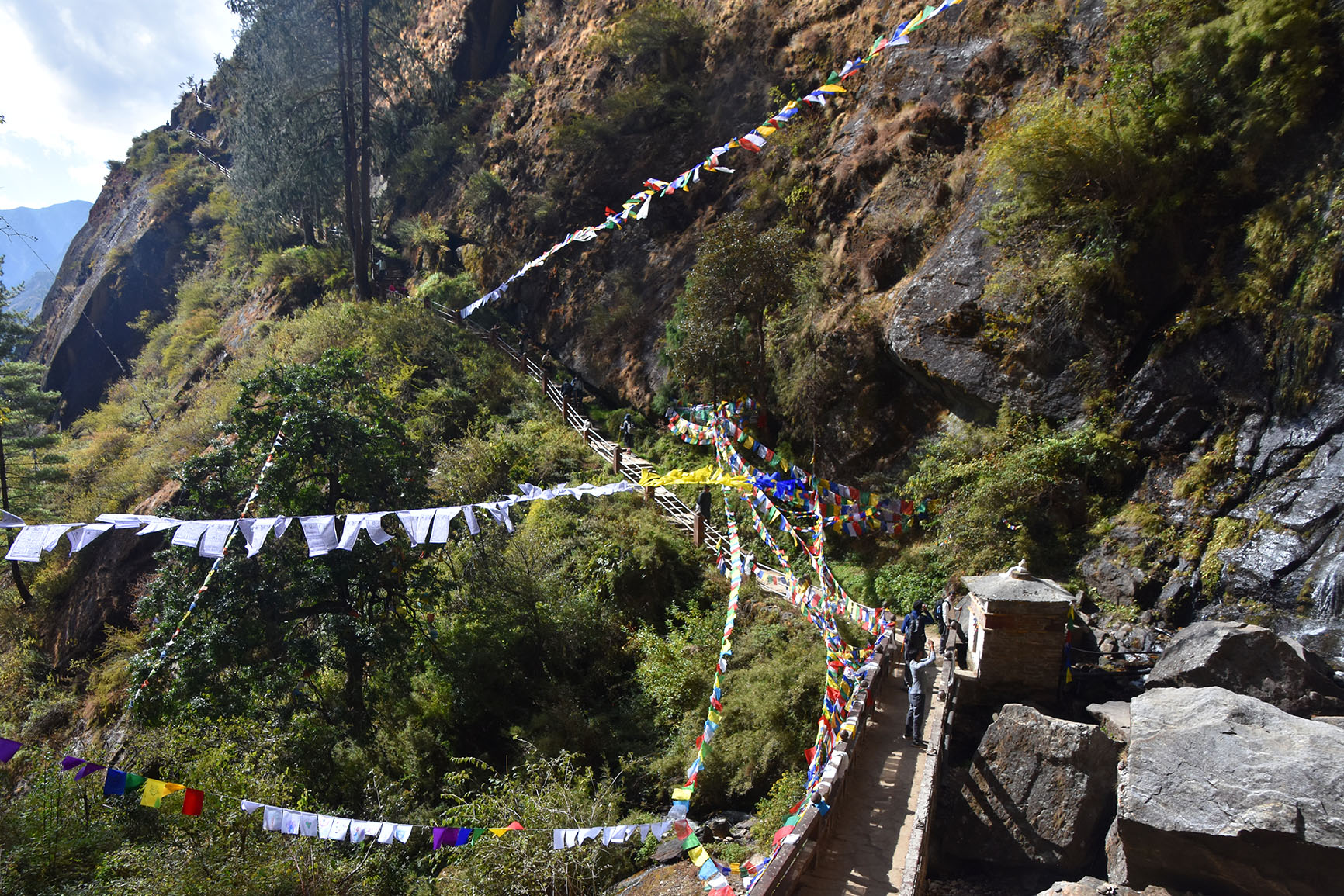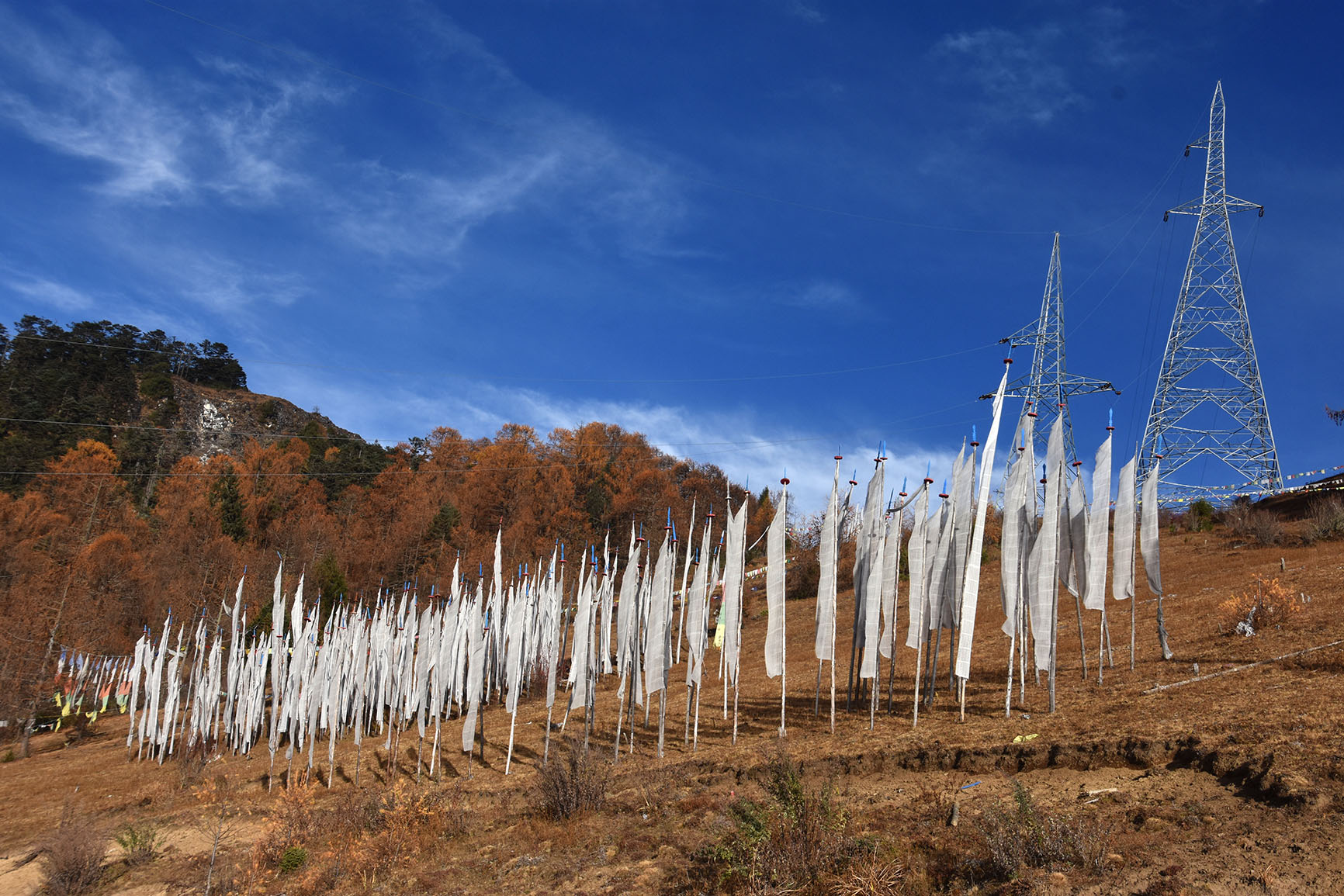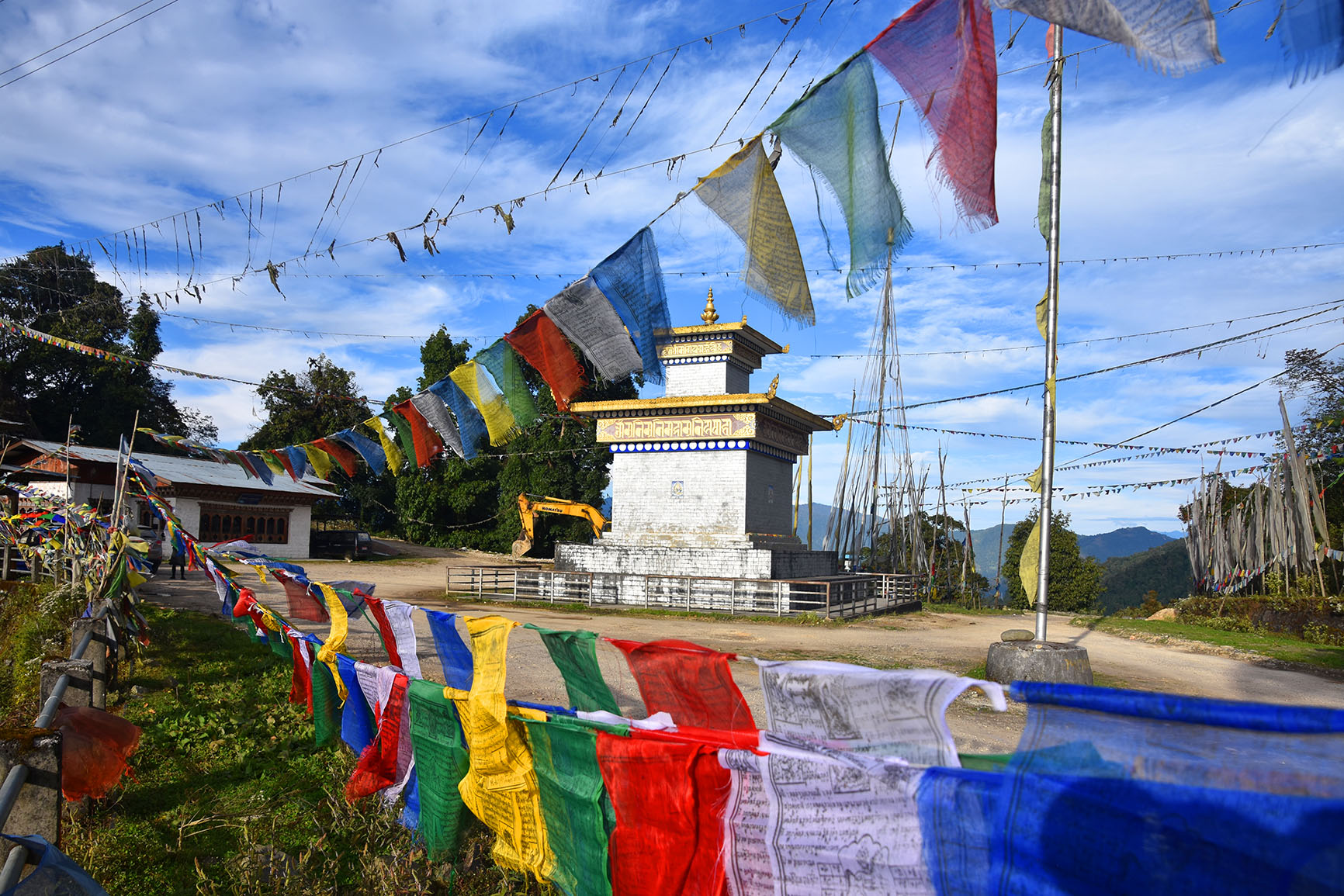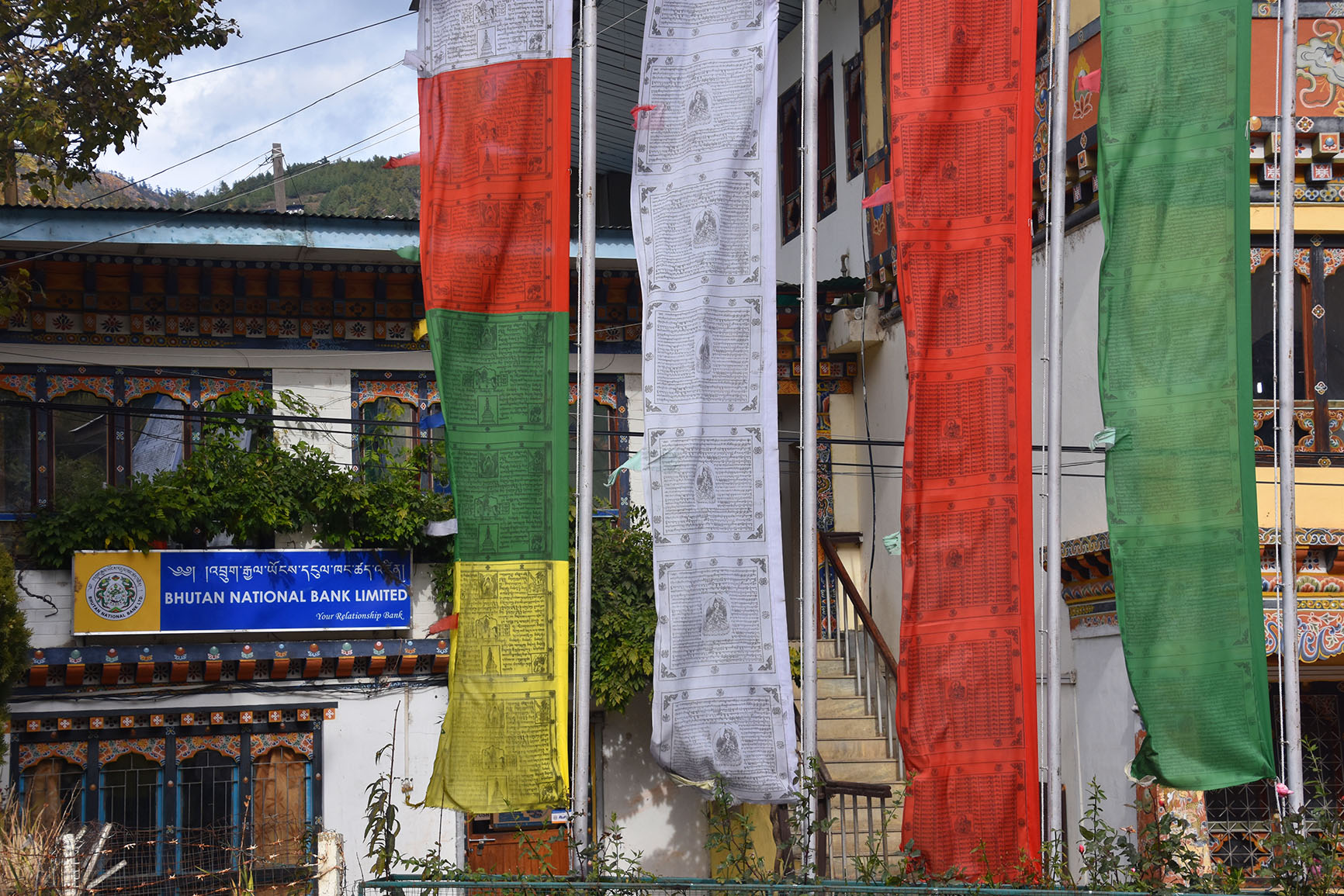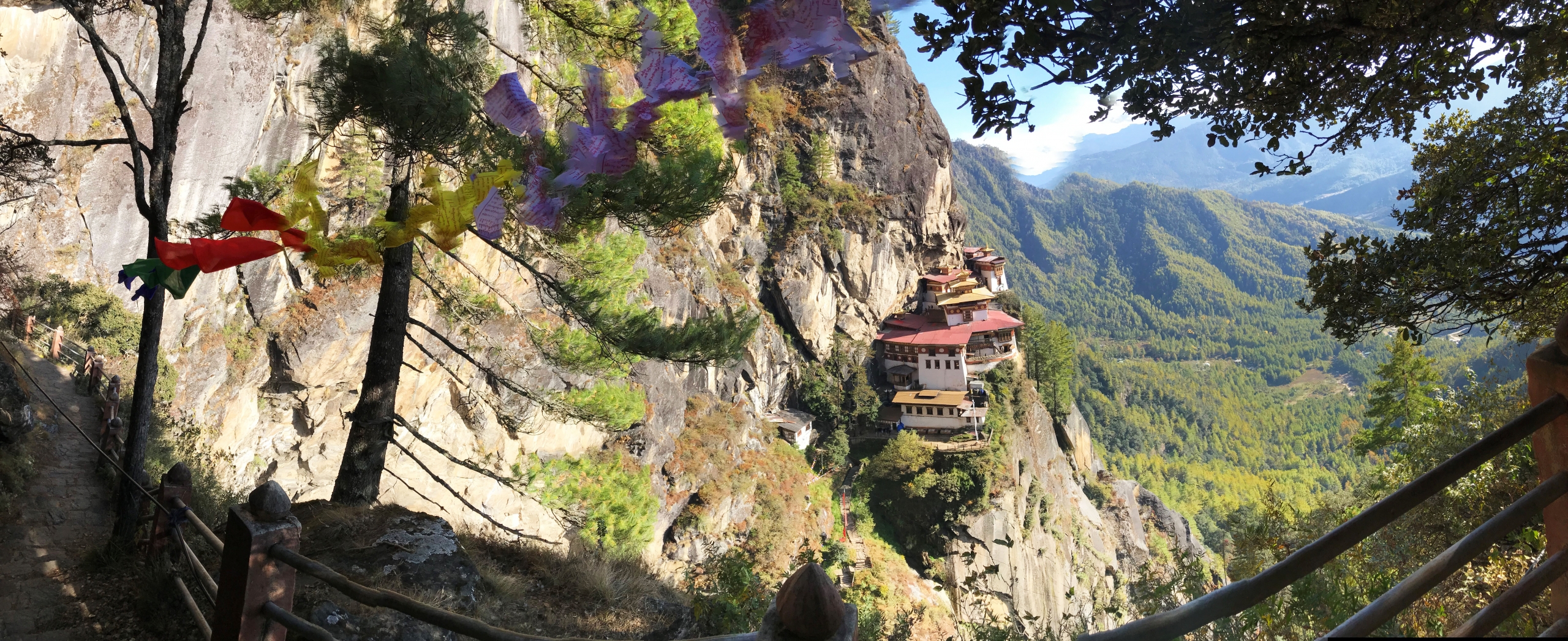Bhutan’s Prayer Flags
Forever fluttering on the Himalayan wind, Bhutan’s mesmeric flotilla of prayer flags with messages of peace, wisdom, strength and compassion accompany travellers across the length and breadth of this oh-so-special mountain kingdom.
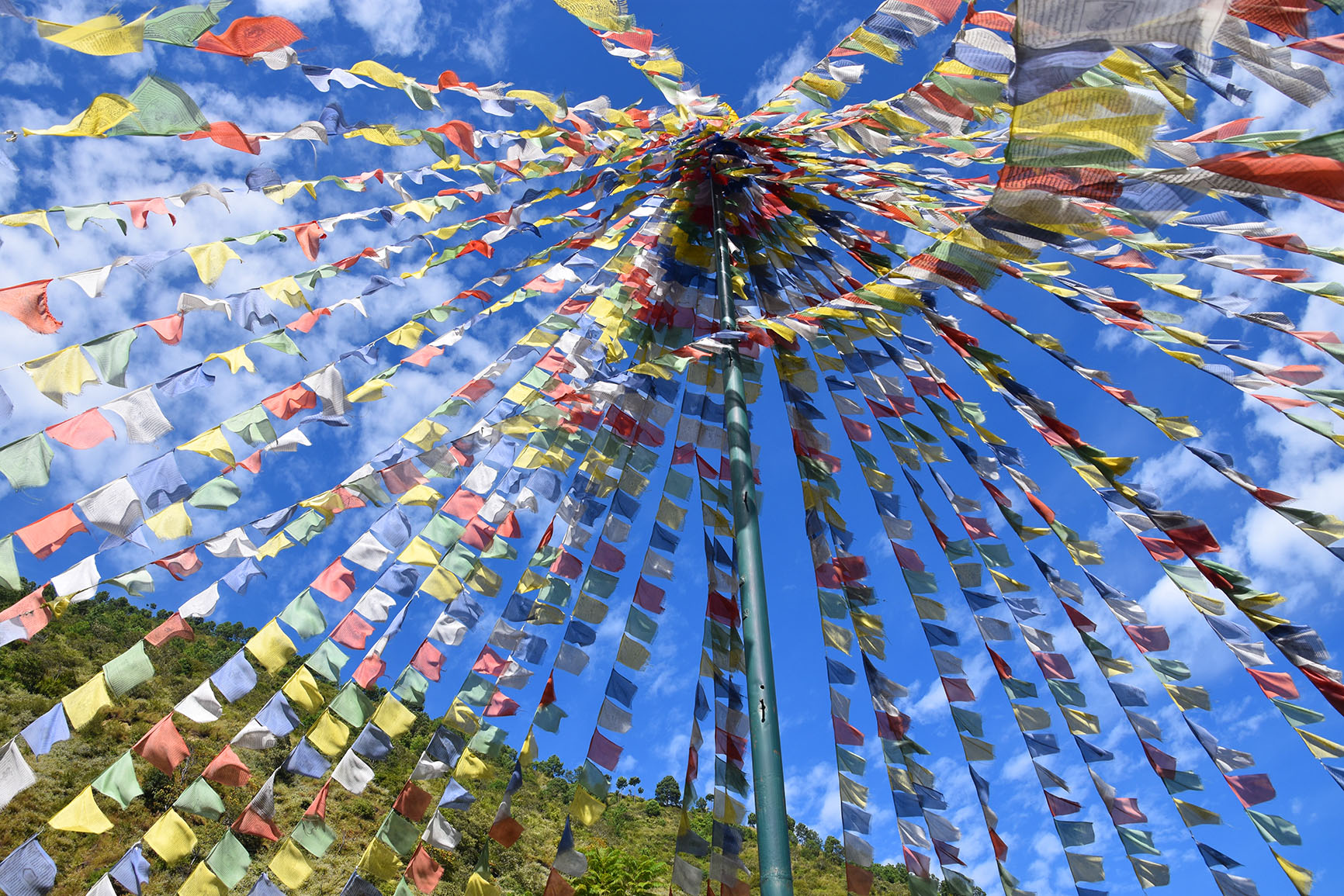
Strung across and along mountain passes, peaks, trails, bridges, buildings and roads they crown not only some of the most majestic of natural scenery, with grand-standing wilderness views to all corners, but also stupas, dzongs, monasteries, temples and prayer sites.
Colourful and cheery the flags are known as Lung Dhar (Wind Horse).
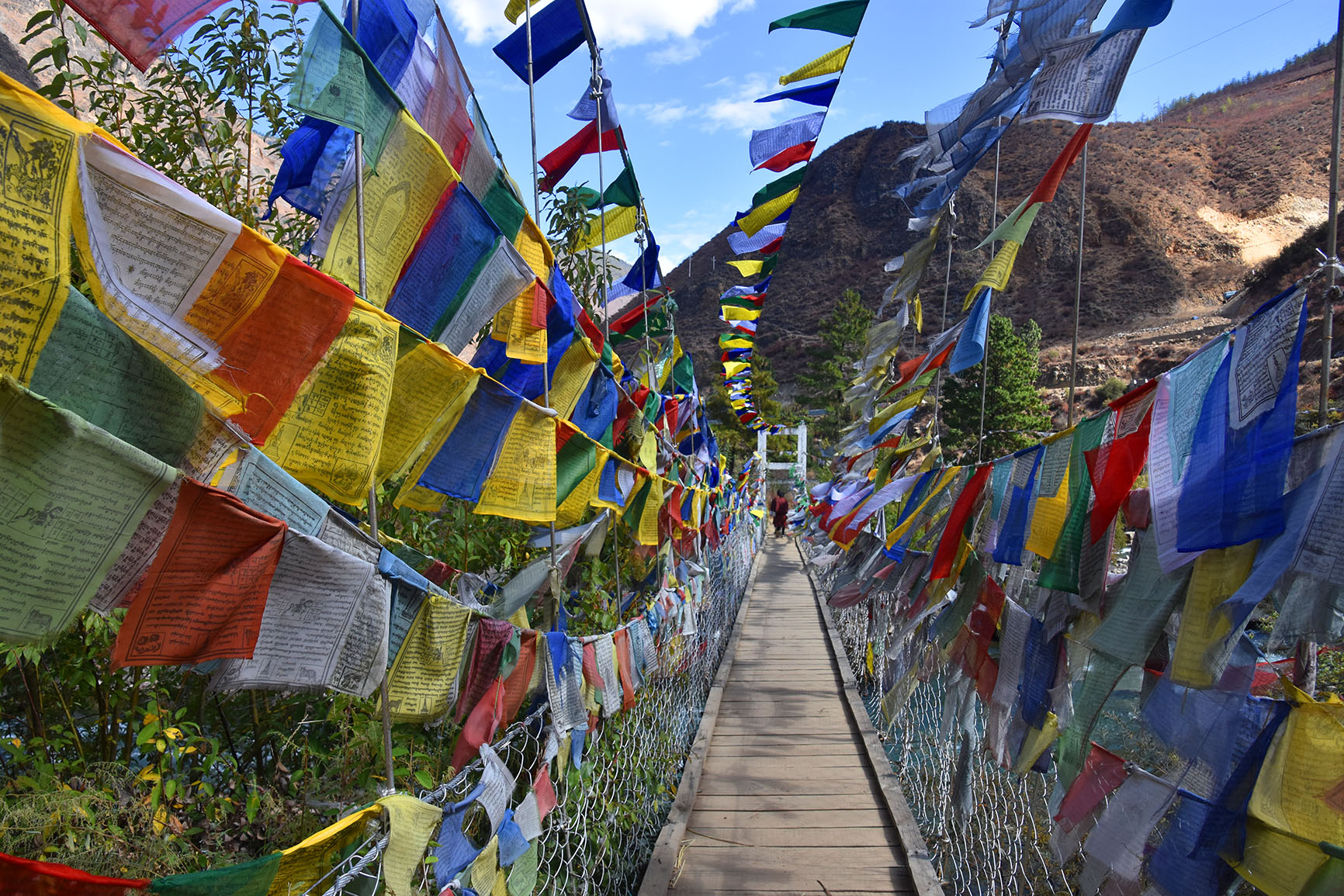
Spreading their mantras of hope, legend has it that prayer flags were originally brought to Tibet by the Gautama Buddha in the 5th Century BC. This practise spread across to Bhutan where they have included printed wood-brick text and images for centuries.
As my images show they come in one of two guises: Lung-ta (horizontal ‘Wind Horse’ flags) that are strung out across a line between two points; Darchog (vertical ‘flagstaff’ flags) that flutter from strong, long poles.
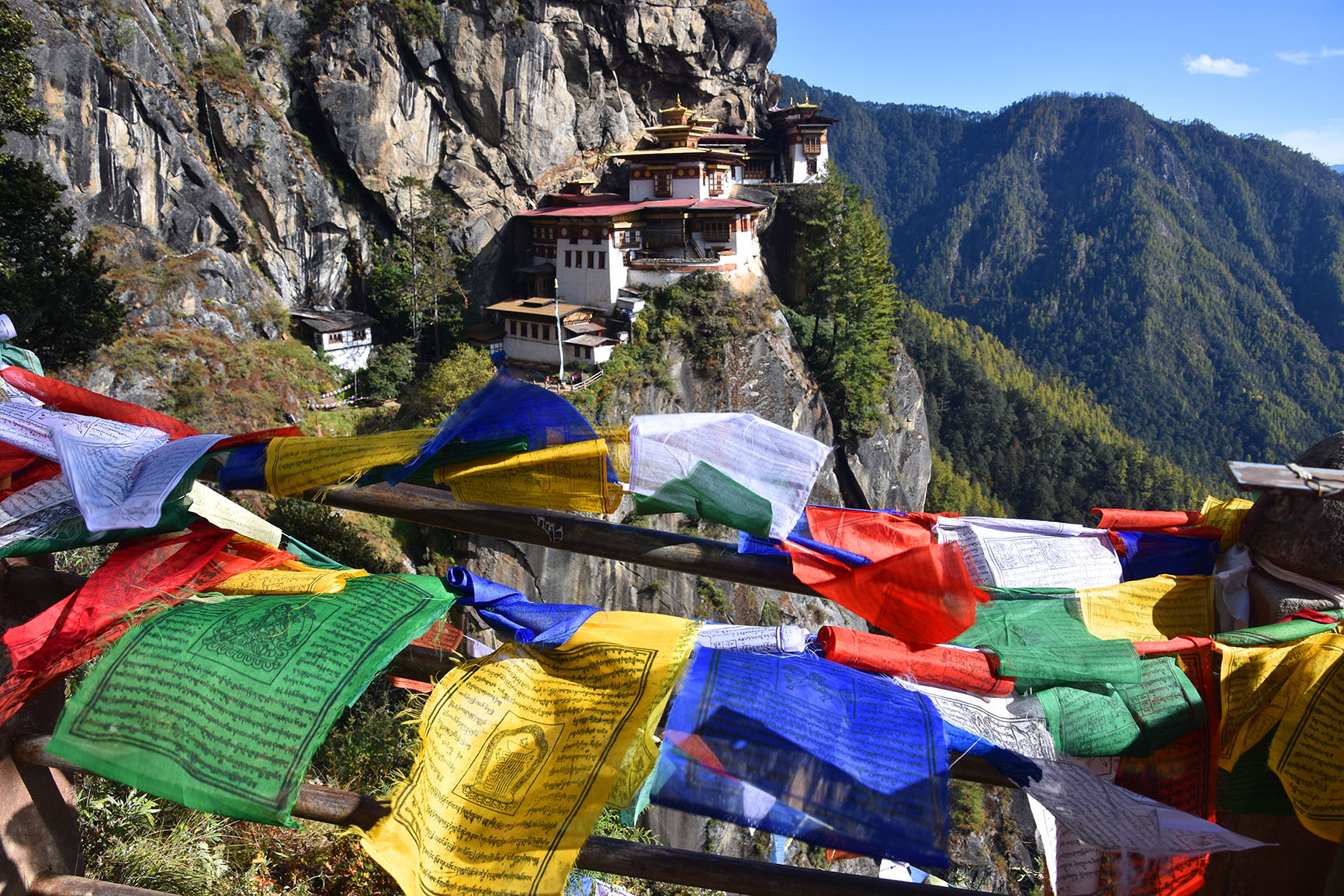
Lung-ta are rectangular in shape and come in sets of five colours – arranged from left to right in a time-honoured order to represent the five elements: blue (sky/space); white (air/wind); red (fire); green (water); yellow (earth). The belief is that this mix and balance of colours allows for a healthy and harmonious life, which also transcends through to the most positive of prayer flag messages.
Darchog tend to be either large, single, multi-coloured rectangular flags, or tall all-white mantra-printed ribband flags.
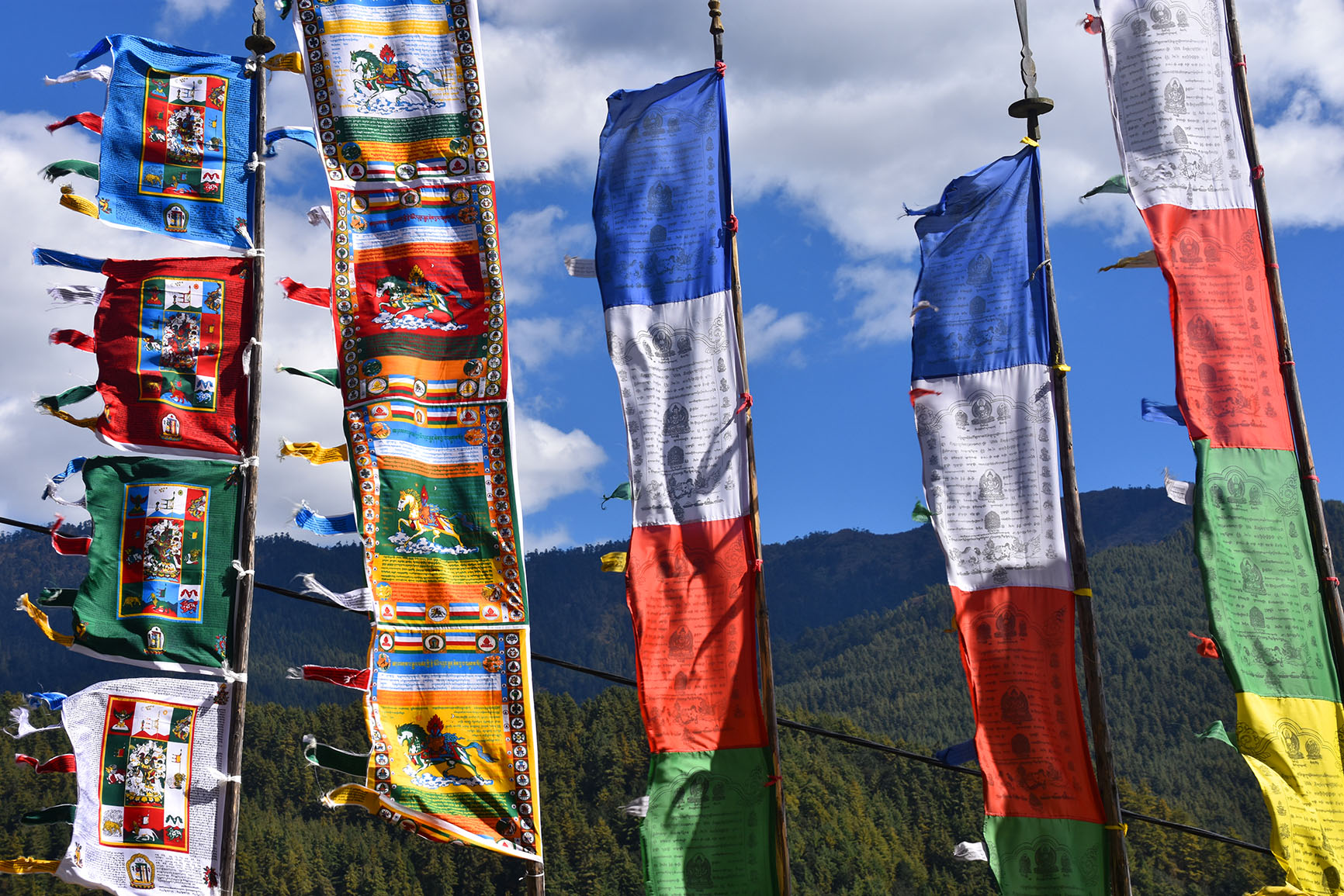
Climbing up amidst a sea of prayer flags you soon realise how powerful their place is in society. Standing like regal sentries they are ever-present across Bhutan – from the remotest of rural landscapes to the busiest of urban sprawls.
Regarded as sacred, the four hundred plus printed mantras (each aligned to a specific deity) are often emblazoned with images of the Four Dignities – the tiger, snowline, garuda and dragon. Private prayers, blessings and wishes are added to blow across the wind which in turn, purifies and sanctifies the flags’ chosen messages to benefit all.
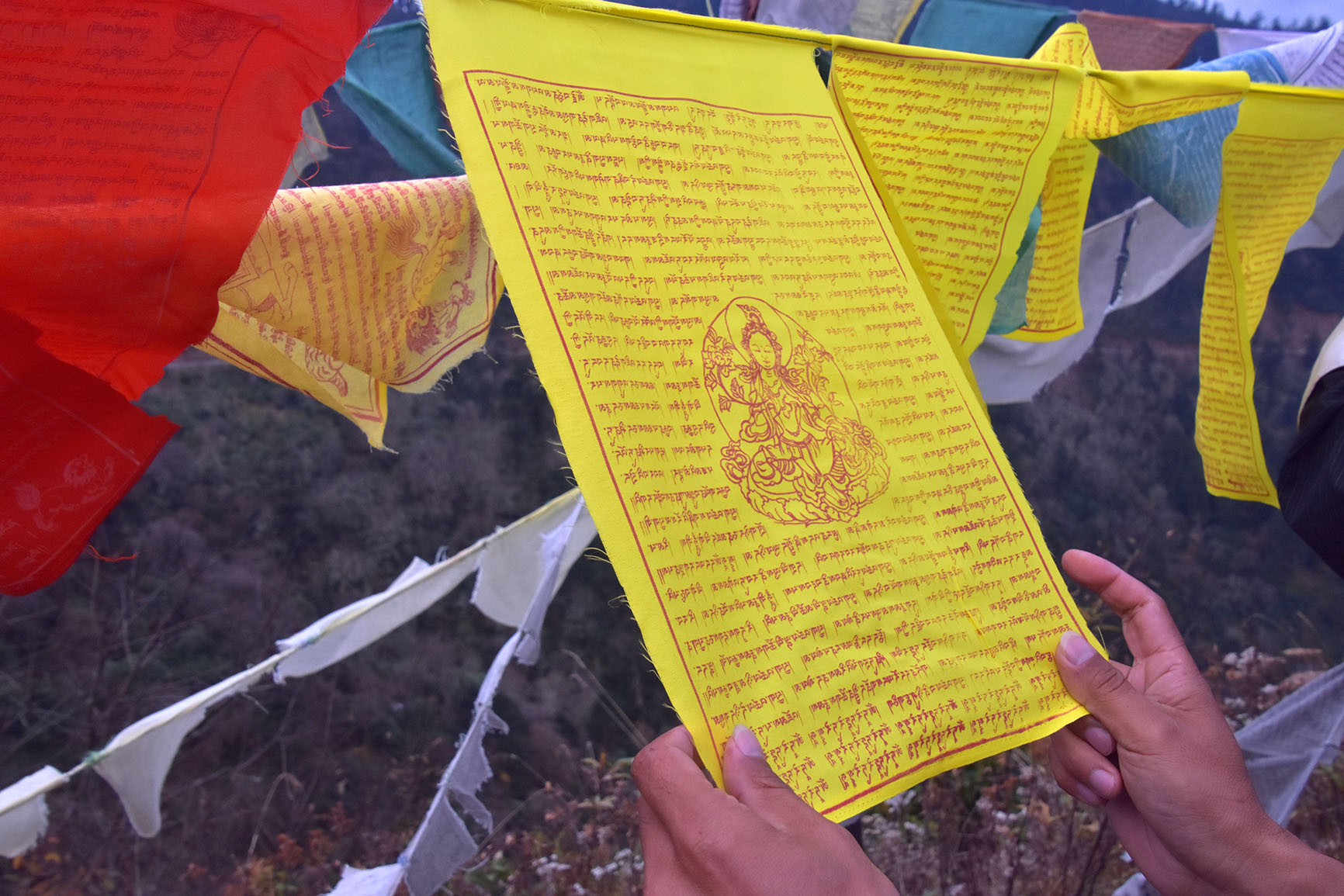
When hanging our own flags, our Bhutanese travelling partners would often sing out our various chosen flags’ mantras. Although we didn’t speak Bhutanese, this added hugely to the beauty of such a simple concept of hope, remembrance and good will.
Local tradition also strongly emphasises that choosing the correct day to hang a prayer flag is essential. For example, the 8th, 10th,15th,25th and 30th days in each lunar calendar ensure the best of omens. Equally, sunny windy days are ideal. Essential when the alternative is to choose an unfavourable astrological date that may bring bad luck and negative karma.
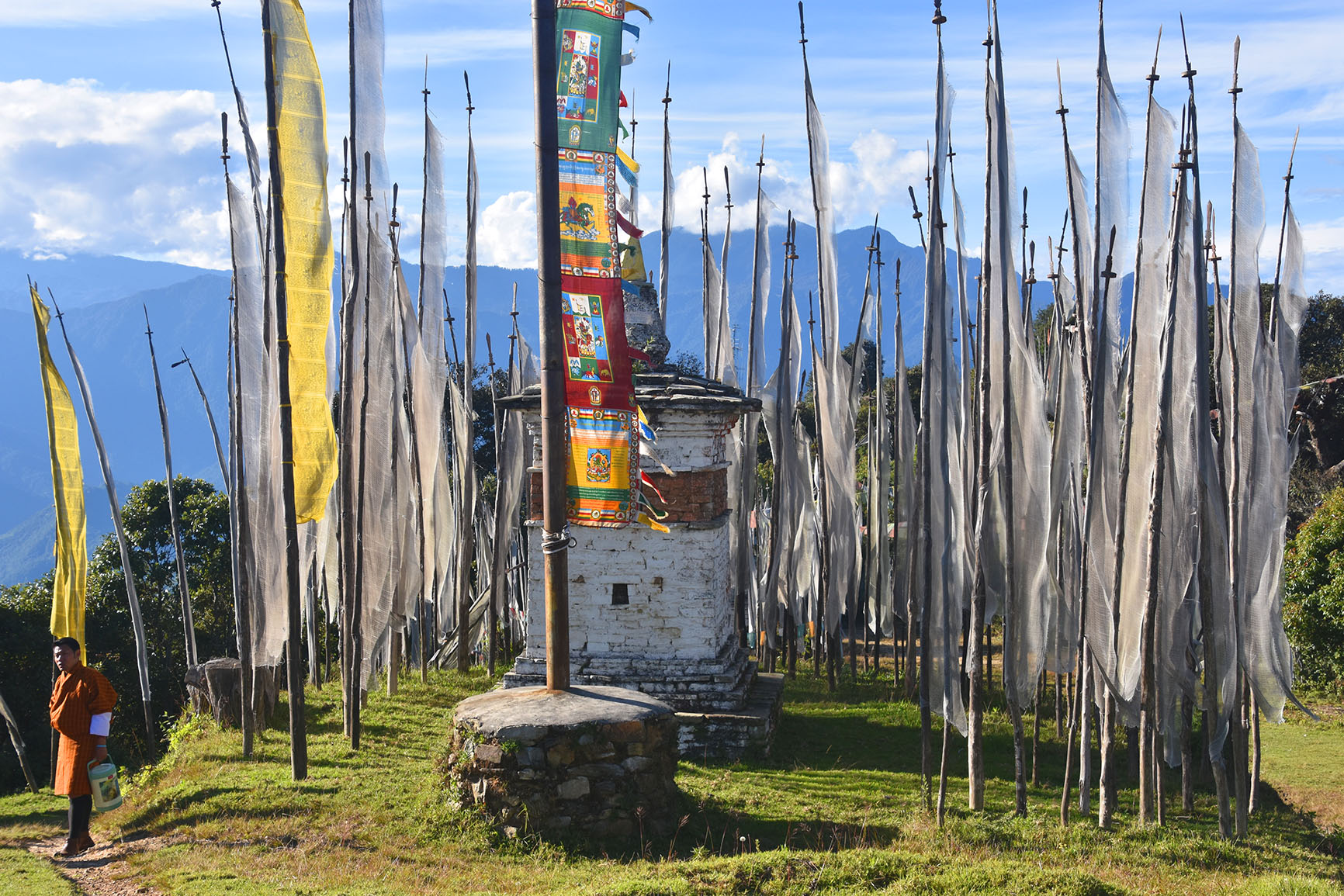
A consistent mountain breeze throughout the country bodes well, as the more the flags flutter, the greater their divine value. This is why Bhutan’s multitude of prayer flags are always in the best positions to catch the wind.
